- Investigations
- Classifieds
- Legal Notices

Memphis Belle visited Dayton on ’26th mission'
Credit: DaytonDailyNews
Memphis Belle, the iconic World War II bomber, was unveiled to the public in 2018 after years of restoration at the National Museum of the U.S. Air Force.
But this wasn’t the only time the legendary B-17 has drawn a crowd in the Gem City.
The plane, along with her crew, was the first Army Air Forces heavy bomber to fly 25 missions over Nazi-held Europe and return to the United States.
In 1943, the Memphis Belle flew into Dayton during a war bond tour of 30 cities. The tour, a way to raise money and boost morale, was dubbed the “26th mission.”
For the thousands of workers in Dayton producing materiel for the war effort, the tour created a sense of community and raised spirits, said Alex Heckman, vice president of museum operations for Dayton History.
PHOTOS: Memphis Belle and crew visit Dayton on 1943 war bond tour
“This one really had star power. The plane was a physical symbol of American progress in the war effort in this cataclysmic global war.”
The “battle-scarred” plane and crew, “two components of the greatest team in this war,” according to the Dayton Daily News, arrived at Patterson Field July 9, 1943. The next day the bomber was on display at the Dayton Municipal Airport.
Ten crew members, and their mascot, a Scottish terrier named Stuka, rallied a crowd downtown at the Old Courthouse and had lunch at the Moraine Country Club before visiting the Standard Register and National Cash Register companies.
On arrival to the NCR Auditorium, the crew was greeted by the thunderous applause of more than 2,500 National Cash Register employees gathered to pay tribute to the war heroes.
Flags of the United Nations covered the walls, an enlarged replica of the Memphis Belle nose art hung over the stage, and life-sized photographs of the plane’s combat and ground crew decorated the auditorium, according to a 1943 issue of NCR Factory News.
WHIO radio broadcast the assembly and workers gathered around radios at NCR, General Motors, Delco Products and other factories across Dayton that were producing the weapons needed for war.
Col. Edward A. Deeds, the NCR chairman of the board, and famed aviator Orville Wright, were seated on stage with other dignitaries as Maj. Robert Morgan, the pilot of the Memphis Belle, addressed the crowd.
“We are teammates of the greatest team that has ever been formed in the world,” said Morgan, whose war-time girlfriend, Margaret Polk of Memphis, Tenn., was the inspiration for the plane’s name.
“You are just as important a part of the team as we are. I know, and every member of my crew knows it … every member of the Eighth Air Force knows it — the ground crew, office crew, the flyers over the target – every one of them knows how important every one of you are!”
Morgan’s remarks, and the words of thanks from each of the crew members, was a morale boost for the men and women making gun magazines, bomb sites and artillery shells in the Miami Valley, Heckman said.
“I have to believe that in the minds of most of these workers sitting in the auditorium and gathered around radios, that in a very real human way, seeing these 10 men on the stage drove home how important the work was they were doing day in and day out, really was.”
About the Author

U.S. War Bonds
The last time the United States issued war bonds was during World War II , when full employment collided with rationing , and war bonds were seen as a way to remove money from circulation as well as reduce inflation. Issued by the U.S. Government, they were first called Defense Bonds. The name was changed to War Bonds after the Japanese attack on Pearl Harbor , December 7, 1941. Known as debt securities for the purpose of financing military operations during war time, the bonds yielded a mere 2.9 percent return after a 10-year maturity. Living in the United States with a median income during World War II meant earning about $2,000 a year. Despite the war’s hardships, 134 million Americans were asked to purchase war bonds to help fund the war. Stamps also could be purchased, starting at 10 cents each, to save toward the bond. The first Series ‘E’ U.S. Savings Bond was sold to President Franklin D. Roosevelt by Treasury Secretary Henry Morgenthau . The bonds sold at 75 percent of their face value in denominations of $25 up to $10,000, with some limitations. The war bonds actually were a loan to the government to help finance the war effort. The War Finance Committee was in charge of supervising the sale of all bonds, and the War Advertising Council promoted voluntary compliance with bond buying. The work of those two organizations produced the greatest volume of advertising in U.S. history. In the name of defense of American liberty and democracy, and as safe havens for investment, the public was continually urged to buy bonds. An emotional appeal went out to citizens by means of advertising. Even though the bonds offered a rate of return below the market value, it represented a moral and financial stake in the war effort. The advertisements started with radio and newspapers, then later added magazines to reach the masses. The bond campaign was unique in that both the government, as well as private companies, created the advertisements. Those who contributed advertising space felt they were doing even more for the war effort; then there were organizations that made up their own war bond advertisements to reflect their patriotism. The government recruited New York’s best advertising agencies, famous entertainers, and even used familiar comic strip characters to further their appeal to America. In their advertisements, the New York Stock Exchange urged purchasers not to cash in their bonds. More than a quarter of a billion dollars worth of advertising was donated during the first three years of the National Defense Savings Program. Massive advertising campagins used any means of media possible, and the campaign was a huge success. Word spread quickly; polls indicated after only one month that 90 percent of those responding were aware of war bonds. Bonds became the ideal channel for those on the home front to contribute to the national defense. Bond rallies were held throughout the country with famous celebrities, usually Hollywood film stars, to enhance the advertising's effectiveness. Free movie days were held in theaters nationwide with a bond purchase as the admission. Such popular Hollywood stars as Greer Garson, Bette Davis and Rita Hayworth completed seven tours in more than 300 cities and towns to promote war bonds. The "Stars Over America" bond blitz, in which 337 stars took part, surpassed its quota and netted $838,540,000 worth of bonds. One promotional cardboard had slots for 75 quarters, to equal $18.75. When it was full, one could turn it in to the post office for a $25 war bond that matured in 10 years. Local clubs, organizations, movie theaters and hotels also did their part with their own advertisements. Then there was the Civilian D-Day on June 6th, 1944, when thousands of ads flew from the sky over Chicago to capture the attention and hearts of potential contributors. Even the Girl Scouts became involved with each scout donating one stamp. Those stamps, starting at 10 cents each, were then traded into the national organization for the purchase of war bonds. Norman Rockwell created a series of illustrations in 1941 that became a centerpiece of war bond advertising. The Saturday Evening Post reproduced and circulated them, much to the public's approval. While Rockwell was the most notable artist of war bonds, Irving Berlin was the most celebrated composer. Famous for his "God Bless America," he wrote a song entitled "Any Bonds Today?" and it became the theme song of the Treasury Department’s National Defense Savings Program. The famous Andrew Sisters were among the primary performers of this historic song. One of the most successful single events was a 16-hour marathon radio broadcast on CBS, during which nearly $40 million worth of bonds were sold. The marathon featured singer Kate Smith, famous for her rendition of "God Bless America." Patriotism and the spirit of sacrifice could be expressed with war bond purchases. Millions jumped aboard the war bond effort. The sports world did its part as well, holding special football and baseball games with a war bond as the price of admission. An unusual baseball game took place in New York City with the New York Yankees, the New York Giants and the Brooklyn Dodgers. Each of the teams came to bat six times in the same nine-inning game. Their final score was the Dodgers 5, Yankees 1 and the Giants 0, and the U.S. Government was $56,500,000 richer in war bond sales. At the end of World War II, January 3, 1946, the last proceeds from the Victory War Bond campaign were deposited into the U.S. Treasury. More than 85 million Americans — half the population — purchased bonds totaling $185.7 billion. Those incredible results, due to the mass selling efforts of helping to finance the war, have never since been matched. The Series E bond was withdrawn on June 30, 1980, when the Series EE bond replaced it, and the War Bond became history.
AIR & SPACE MAGAZINE
Restoration: the memphis belle.
For this famous B-17, surviving 25 missions in World War II was the easy part
Mark Bernstein
/https://tf-cmsv2-smithsonianmag-media.s3.amazonaws.com/filer/ON08_Resto_Flash_631x300.jpg)
Two years ago, Roger Deere traveled to an eastern Ohio coal town, where he visited a four-room Sears pre-fabricated house whose ceiling bowed down from the weight of all the stuff in the attic. The homeowner had died; a relative poking through the accumulation had run across something he thought might be of interest to Deere. Along with everything else, the attic contained the radio equipment for a B-17 bomber.
Deere did not ask how radio equipment got into the attic. He did not want an explanation; he wanted the equipment.
In time, it will be placed in the Memphis Belle , a Boeing B-17F Flying Fortress now being restored at the National Museum of the U.S. Air Force in Dayton, Ohio, where Deere is the chief of the restoration division.
During World War II, the U.S. Army Air Forces required heavy-bomber crews to complete 25 missions before they could go home. In 1943, having flown over France, Belgium, and Germany, the Memphis Belle crew became one of the first to reach that goal. After returning to the States in June 1943, the bomber and many of its crew served as the centerpiece of a 31-city War Bonds tour. Academy Award-winning director William Wyler documented the Belle ’s service in a 41-minute color film (Europe.
The bomber retains its fame today. Those too young to remember it from the war may know its story from the fictionalized 1990 movie Memphis Belle , or from the B-17 (used in that movie) that now tours airshows in Belle markings. The real Belle owes its present-day survival to a combination of romance and civic pride. In 1946, it was sitting with hundreds of other B-17s in Altus, Oklahoma, ready to be chopped up for scrap. A newspaper reporter learned of its fate and told Memphis mayor Walter Chandler; Chandler bought the B-17, originally costing $314,000, for the $350 salvage price as a way to honor the city’s namesake (“ Memphis Belle ” is a tribute to resident Margaret Polk, the pilot’s girlfriend). But after six decades, local groups concluded they could not raise the funds to complete a needed restoration. In 2004, the Air Force announced plans to relocate the aircraft to its national museum and finish restoring it.
The next year, two convoys trucked the disassembled aircraft to the cluttered World War II-era hangars that now house the restoration effort. When, five or more years from now, the work is complete, the museum will permanently display the Belle to visitors.
In 25 missions the Memphis Belle had its tail splintered, five engines shot out, and its body pocked with hundreds of holes from German flak. The worst damage, however, came in peacetime: Vandals made off with almost everything not fastened down; “Sometimes they pried things off the walls,” says Deere. The Belle is now missing most of the interior: the pilot, copilot, and navigator seats, the control yokes, and much more.
Finding replacements is difficult. While the United States built 13,700 B-17s, fewer than 100 remain. “There are structural parts we’re never going to find unless somebody runs across a B-17 sitting out in a field somewhere,” Deere says.
For some pieces, replacements are being fabricated. Molds have been made for the plexiglass in the top turret, and for an aft fuselage ring frame. The engines that came with the Memphis Belle ’s other parts were not original to a B-17, so they’ll be replaced with rebuilds assembled from the museum’s substantial accumulation of aircraft parts.
The original cloth-coated wire is no longer made in the United States, so the restorers are buying it new in Great Britain. Though the wires will be out of sight, the restorers are intent on making the aircraft as authentic as possible. As for the body, all the paint is being stripped. Paint, Deere says, “hides a lot of corrosion. We want to get it stripped down so we can undertake the structural repairs first.” The work is slow, in part because no chemical strippers are being used on the interior. “Manufacturers claim their chemicals are not corrosive,” says Deere. “Maybe it’s not corrosive now, but what about in five or ten years?” Working with the restorers, private-sector chemists modified an existing product into a sand-like dry stripper that addressed Deere’s concerns. The entire aircraft should be stripped by year’s end. Besides revealing underlying corrosion, stripping brought to daylight more than 1,000 names inscribed in the aircraft’s tail and fuselage by the public during the bond drive. The names have been photographed; they will disappear again when the aircraft is repainted. The aircraft arrived with several large patches on its tail. They were quick-and-easy fixes made with flat sheet metal; the original tail, however, had a compound contour. Those are much harder to fabricate.
Staff efforts are supported by volunteers. The head restorer of the tail gun is John Vance, whose father was a B-17 tail gunner. Volunteers Chuck Flaum and Steve Markman built 10 replicas of the wooden carriers that held the oxygen bottles crew members carried while moving inside the unpressurized craft. They found the original blueprints on microfiche at the National Archives.
Some parts just can’t be replicated. Deere would particularly like the instrument panel with the manufacturer’s data plate, which is specific to the Memphis Belle . “Somebody’s got it,” he says. “We’d like it back—no questions asked.”
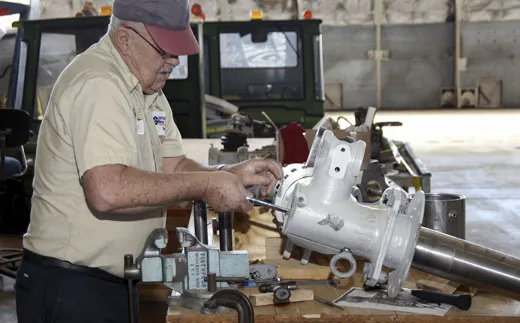
Get the latest stories in your inbox every weekday.

- April 5, 2024 Japan Evacuated Okinawa-based F-15s After 7.2 Magnitude Earthquake In Taiwan Military Aviation
- April 5, 2024 B-21 Raider Spotted During Test Flight Military Aviation
- April 5, 2024 Two Russian Tu-95MS Bombers Flying Over Barents and Norwegian Sea Intercepted By RoNAF F-35s Russia
- April 5, 2024 The Italian Air Force Bids Farewell To The AMX ‘Ghibli’ Italian Air Force
- April 4, 2024 Danish F-16 Sports NATO Emblem To Celebrate 75th Anniversary Of North Atlantic Treaty Military Aviation
“Memphis Belle”: The Story Of A Legendary Boeing B-17F Flying Fortress

What began as any other B-17 to roll out of the Boeing assembly line and became an aircraft of legendary status.
The reason for “Memphis Belle” being a legend? Belle was one of the first heavy bomber aircraft to complete 25 missions with its crew intact, and successfully return to the United States. A feat many thought impossible, as the average for the 8th Air Force at the time was 18 missions before loss of the aircraft and or crew.
The History
Memphis Belle started off as any other Boeing B-17F-10-BO, quietly rolling off the assembly line en route to U.S. Army Air Corps inventory. Bearing the manufacturer’s serial number 3470, USAAC Serial No. 41-24485, Belle was added to the USAAC Inventory on July 15th 1942. In September she would be assigned to her unit, the 91st Bombardment Group in Bangor Maine. A month later her journey to war would begin, and on October 1st she would fly to her permanent home in the 324th Bomb Squadron at England’s RAF Bassingbourn.
Named after pilot Robert K Morgan’s sweetheart, Margaret Polk, who was a Memphis Tennessee resident, he originally intended to name the aircraft “Little One”, which was his pet name for her. Shortly thereafter, Morgan and co-pilot Jim Verinis watched the film “Lady for a Night,” in which the leading actress owns a riverboat dubbed the “Memphis Belle.” Out of a film and successful proposition to his crew, the name was set. Morgan then contacted George Petty of Esquire magazine, asking for a pinup girl to go with the name. Petty agreed and supplied the now famous art from the April 1941 issue. The art was then painted on by the 91st’s group artist, Corporal Tony Starcer.

On November 7th, 1942, Belle flew out for her first mission. At times, due to aircraft availability, the Belle stayed home for repairs, while the crew flew another available aircraft. Belle was a tough girl, repeatedly taking the hits and continuing to fly, among the damage repaired by Crew Chief Joe Giambrone, includes the replacement of 9 engines, both wings, two tails, and both main landing gear.
1- November 7th, 1942 – Brest, France 2- November 9th, 1942 – St. Nazaire, France 3- November 17th, 1942 – St. Nazaire, France 4- December 6th, 1942 – Lille, France 5- December 20th, 1942 – Romilly-sur-Seine, France 6- December 30th, 1942 – Lorient, France (flown by Lt. James A. Verinis) 7- January 3rd, 1943 – St. Nazaire, France 8- January 13th, 1943 – Lille, France 9- January 23rd, 1943 – Lorient, France 10- February 14th, 1943 – Hamm, Germany 11- February 16th, 1943 – St. Nazaire, France 12- February 27th, 1943 – Brest, France 13- March 6th, 1943 – Lorient, France 14- March 12th, 1943 – Rouen, France 15- March 13th, 1943 – Abbeville, France 16- March 22nd, 1943 – Wilhelmshaven, Germany 17- March 28th, 1943 – Rouen, France 18- March 31st, 1943 – Rotterdam, Netherlands 19- April 16th, 1943 – Lorient, France 20- April 17th, 1943 – Bremen, Germany 21- May 1st, 1943 – St. Nazaire, France 22- May 13th, 1943 – Meaulte, France (flown by Lt. C.L. Anderson) 23- May 14th, 1943 – Kiel, Germany (flown by Lt. John H. Miller) 24- May 15th, 1943 – Wilhelmshaven, Germany 25- May 17th, 1943 – Lorient, France
Following the conclusion of the 25th mission the aircraft was flown back to the United States on June 8th 1943, using a composite crew of members who had flown missions on board the Belle, whom were chosen by the Eighth Air Force for a 31 city War bonds tour. It was during this trip that the names of the crew were added to the aircraft, in addition to its 25 bombs signifying 25 successful missions. Other markings on board the aircraft include 8 Swastikas, signifying the 8 German fighters shot down by the crew on board.

Following the War Bonds tour, Memphis Belle was saved from the scrapyard axe by the Mayor of Memphis Tennessee. She was ultimately placed into storage until 1949, when she was moved to be placed on display at the city’s National Guard Armory near the fairgrounds. It was here she sat until the 1980’s, outdoors and in the elements deteriorating, plundered for souvenirs, and vandalized. in the 1970s, another Mayor returned the aircraft to the U.S. Air Force, who allowed the city to keep the aircraft under the condition that it be restored to its former glory.

In 2003 Belle was moved to an indoor restoration facility after many years of inaction, but again never acted upon. It was this and her condition that led to the U.S. Air Force requesting that the aircraft be returned to their custody, ultimately to be fully restored and placed on display at the National Museum of the U.S. Air Force in Dayton Ohio. In October of 2005 that became a reality, and the true restoration of Memphis Belle was to begin.

Over the course of a 12 year painstaking restoration, the dream of a restored Memphis Belle was finally realized. As part of the most extensive restoration in USAF Museum history, Belle was totally torn apart, rebuilt, and repainted to exactly how she was upon landing following her 25th mission. It was during this restoration that it was even discovered that hundreds of names and personal messages were found scratched in the aluminum skin, with people having been allowed to do so during the War Bonds tour. With this completion of restoration in 2017, the Belle was ready to go on public display. In May of 2018, the exhibit was unveiled to the public with much fanfare. Located within the WW2 hall, she now serves as the centerpiece of the collection.
The legacy and story of the Memphis Belle not only lives on within the museums, but also amongst film. In a 1944 color film, Footage from the Belle’s second to last mission was used as a method of building morale on the homefront. Another film, again titled after its namesake, utilized an A list Hollywood cast and premiered in 1990. This film utilized multiple surviving airframes, and was a dramatization of the final mission. Many of the B-17s used for the movie still fly at airshows today, including one converted to a G model, and painted to resemble the Belle.
Despite the major accomplishments of the Belle, and its history, there are some common misconceptions. Among common belief, is that Belle was the first to reach the 25 mission milestone. That honor belongs to the B-24 Liberator “Hot Stuff” of the 330th Bombardment Group, which completed the incredible milestone 3 and a half months prior. Unfortunately, that Liberator crashed while en route to the United States for its own War Bond tour, after completing an additional 5 missions over Europe.

Belle also wasn’t the first B-17 to complete the 25 mission feat, just barely having been beaten by 6 days. That honor belongs to “Hells Angels” of the 303rd Bombardment Group, which elected to fly a second tour, flying 48 missions before returning to the U.S. for a War Bonds tour. Named after the Howard Hughes movie about World War 1 air warfare, among its exploits include the first bombing raid on Berlin, and awarding two crewmembers with the Congressional Medal of Honor. Ultimately Hells Angels met the fate of far too many aircraft from the war, and was sold and destroyed for scrap in August of 1945, erasing her from existence.

The Crewmembers of The Belle
The crew of the Belle consisted of both steady members, and temporary members. In addition to the missions above, the crew would also fly 5 other missions in other aircraft, due to aircraft availability. those missions were as follows: February 4th, 1943 over Emden, Germany in B-17 41-24515 “Jersey Bounce”; February 26th, 1943 over Wilhelmshaven, Germany in B-17 41-24515; April 5th, 1943 over Antwerp, Belgium in B-17 41-24480, “Bad Penny”; & May 4th, 1943 over Antwerp, Belgium, in B-17 41-24527, “The Great Speckled Bird”.
Flying the Belle, was Captain Robert K Morgan. Born in 1918, Morgan not only flew the Belle for 25 successful missions, but he went on to continue to fight. Following a promotion to Lt Colonel, he would continue to fly B-29 Superfortresses over Japan in the Pacific theatre of the war, completing 26 missions, including the first B-29 mission over Japan. Morgan passed away in 2004.

Captain James A. Verinis was the Co-pilot for the Belle. Born in 1916, Verinis initially started out training to fly fighters, but ultimately would have difficulties and bad luck, driving him to fly B-17 bombers. After his time with the Belle, Verinis would continue to fly B-17s, becoming command pilot for a plane of his own, “The Connecticut Yankee”. Jim was also the crewmember who purchased the crew’s mascot, A Scottish-Terrier named “Stuka”. Verinis passed away in 2003
Captain Charles B. Leighton served as Navigator to the Belle. Born in 1919, Leighton would later go on to serve as a teacher and school counselor, utilizing his degree in Chemistry. Among his accomplishments, Leighton would save the Belle and additional B-17’s after identifying false German radio beacons that were designed to lure unwary B-17s into a trap. Leighton passed away in 1991.
Captain Vincent B. Evans served in the crucial role of Bombardier. Born in 1920, Evans was an incredibly skilled bombardier, and would often be the reason the Belle was chosen to be lead aircraft in formation. Evans would continue to serve, electing to serve another tour of duty along with Morgan in B-29’s. Following the war, he would go on to do many things in Holwood, and even drive race cars. Evans passed away in 1980.
Tech Sergeant Robert Hanson served as Radio Operator. Born in 1920, He was famously photographed kissing the tarmac following the 25th mission. Known for his luck, Hanson carried a lucky rabbits foot with him on every flight. In one instance, when the tail was shot off, the resulting dive nearly sent him out of the aircraft, however, he survived. At another point Hanson sneezed into his logbook, only to have bullets fly through where his head had just been. He kept the bullet ridden log book until his death in 2005.

Staff Sergeant Cecil Scott served as Ball Turret Gunner. “From down there I could see everything”. Born in 1916, Scott fired at a many German fighters and achieved one “Damaged” credit, despite the high likelihood of having shot down multiple aircraft, the criteria for a “kill” requires a witness to the event. Following the war, Scott spent 30 years with the Ford Motor Company, Scott passed away in 1979
Sergeant John P. Quinlan served as tailgunner for the Belle. Born in 1919, JP scored 2 German fighter kills from the rear of Memphis Belle, and would later score even more kills from the tail of a B-29, downing 3 Japanese Zeroes before his B-29 went down. He landed in occupied territory and was captured by the Japanese, only to escape and make his way to Chinese territory. He carried his lucky horseshoe for all 25 missions. Quinlan passed away in 2000.
Tech Sergeant Clarence “Bill” Winchell, served as Left Waist Gunner. Born in 1916, Winchell kept a diary of his time with the Belle, it was this diary that formed much of the account of the Belle. Winchell notably had an astigmatism in one eye, earning him the nickname of the “one eyed gunner”. He managed to pass the eye exams, only by having a copy of the eye chart swiped, for his memorization. Winchell passed away in 1994.
Staff Sergeant Emerson Scott Miller served as the Belles Right Waist Gunner for most of the Belle’s lifespan. Born in 1919, Miller would ultimately fly 15 missions on the Belle, however he did not partake in the War Bonds tour because he had not yet completed the 25 missions necessary to go home himself. He is often referred to as “The Lost Crewman”, because following the war he disappeared from the public eye. Miller passed away in 1995.
Staff Sergeant Casimer “Tony” Nastal also served as the right waist gunner for the Belle, replacing Miller, but only serving one mission. Born in 1923, Nastal was the Belle’s youngest crew member, at only 19 years old. By the time he had been assigned to join the crew, he had already flown 24 missions on other bombers. Following a brief tour with the Belle, Nastal returned to the war to fly another 24 missions. Nastal passed away in 2002.
Staff Sergeant Leviticus “Levy” Dillon served as the Belle’s first flight engineer & top turret gunner. Born in 1919, Dillon would serve on Belle for her 1st, 2nd, 3rd, and 5th missions. On his 3rd mission, he was shot in the leg, and was subsequently bandaged by Fred Astaire’s sister. He never reported the injury. Ultimately a disciplinary issue he claims he did not partake in, but kept quiet as to who did, involving an an officer resulted in him being demoted and transferred to the 306th Bombardment Group following the 5th mission. He would quickly regain his rank. Dillon passed away in 1998.
Tech Sergeant Eugene Adkins served as the Belle’s second flight engineer & top turret Gunner. Born in 1919, Adkins ultimately served on the Belle for 6 missions, taking the place of Levy Dillon following his transfer to another squadron. Adkins would ultimately be replaced on the crew due to frostbite. Following the war, he returned to ultimately become an officer and a pilot of strategic jet bombers such as the B-50, B-36 and B-52, retiring as a Major. Adkins passed away in 1995.
Staff Sergeant Harold P. Loch served as Belle’s 3rd flight engineer and top gunner. Born in 1919, Loch initially served in the 324th Bomb Squadron, and would replace Adkins as flight engineer and top gunner in Feb of 1943. Loch would remain with the Belle for the remainder of her combat flights, and her subsequent War Bond tour. He would not return to the war, and would later continue into the construction business, initially as a contractor, later in real estate. Loch passed away in 2004.
Master Sergeant Joseph Giambrone, Memphis Belle’s Crew Chief. Born in 1918, Joseph would keep the Belle flying for 6 months during her arduous combat time. He even set records by changing a B-17 engine in 4 hours. He painted the bombs after each mission, and he replaced and rebuilt many of her parts to keep her flying. After Belle left for home, Giambrone went on to serve as crew chief for another embattled B-17, Yankee Doodle. Giambrone passed in 1992.
- Boeing B-17 Flying Fortress
- Memphis Belle
Related Articles

Collings Foundation Ends Wings of Freedom WWII Aircraft Tours
In the wake of the 2019 B-17 Flying Fortress accident, the Foundation decided to ground its aircraft and put them on permanent display. The Collings Foundation, whose Wings of Freedom tour brought World War II […]

Inside One of the Remaining B-17G Flying Fortresses Still Flying, the ‘Yankee Lady’
What’s It Like to Be Inside a WWII B-17G Flying Fortress? Come Inside for a Tour. In a bizarre coincidence, at the same time the tragic events of the B-17G and P-63 midair collision was […]

Enjoy a guided walkaround tour of the iconic B-17 Flying Fortress bomber
Up close and personal with the Boeing B-17 “Aluminum Overcast” owned by the EAA. The Boeing B-17 Flying Fortress is a four-engine heavy bomber aircraft developed in the 1930s for the United States Army Air […]
Copyright © 2024 | MH Magazine WordPress Theme by MH Themes Contents of this blog/website may not be used without author's prior written permission. All rights reserved.
Read More Incredible Military Stories!
Most recent articles, veterans service reflections, profiles in courage, battlefield chronicles, famous military units, military book reviews, celebrities who served, military myths and legends, read more stories.
- Military Campaign Stories
- World War II
- First WW II Aircraft Crew to Reach 25...
First WW II Aircraft Crew to Reach 25 Missions
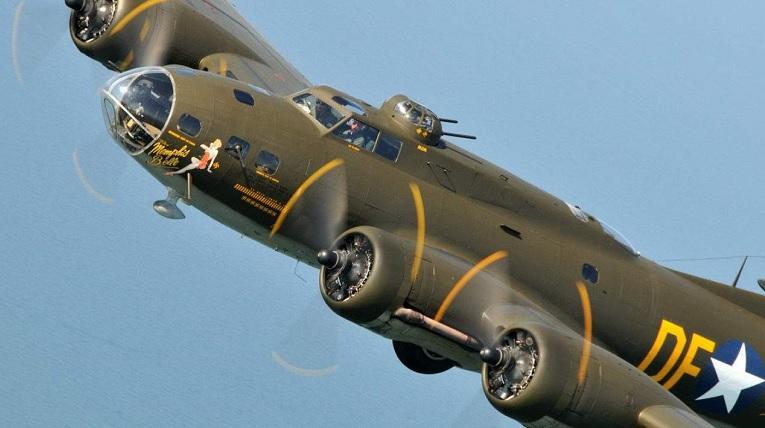
1917, and 1918, the United States government issued Liberty Bonds to raise money for our involvement in World War I. By the summer of 1940 when it appeared the United States would be drawn into World War II, bonds again were being sold as a way to remove money from circulation as well as reduce inflation. After the Japanese attacked Pearl Harbor on December 7, 1941, the bonds became known at War Bonds .
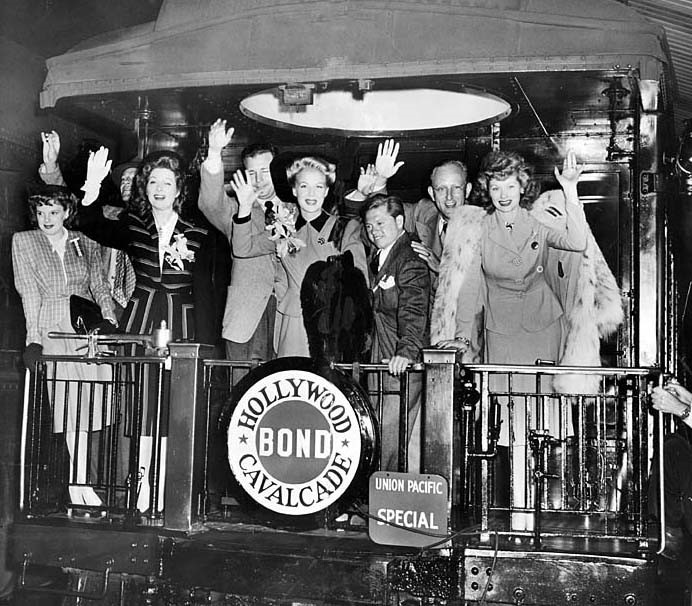
To promote selling the War Bonds, rallies were held throughout the country with famous celebrities, usually Hollywood film stars, sports personalities, and war heroes such as John Basilone and Audie Murphy . Famous American artists, including Norman Rockwell , created a series of illustrations that became the centerpiece of war bond advertising.
Although the U.S. Army Air Force sent its individual war heroes to War Bond rallies, it preferred sending 10-man heavy bombers crews. That because the American public knew heavy bomber crews faced death on every mission with only one in four chance of actually completing their tour of duty; that’s an average life expectancy of only eight weeks. So dangerous was flying heavy bomber combat missions, the USAAF had a policy that when an aircrew wrapped up 25 missions, it was deemed to have “completed their tour of duty.” The War Department would then bring the bomber and its crew home to conduct nationwide promotional tours to sell war bonds to help fund the war effort.
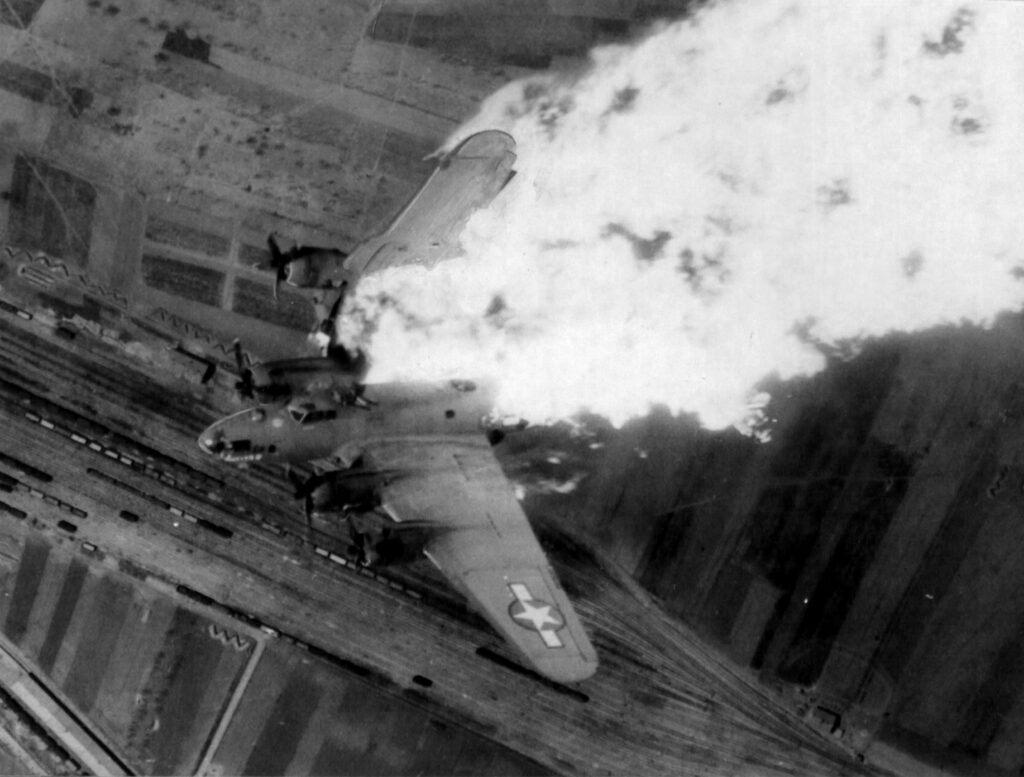
“Memphis Belle” Became the First B-17F Flying Fortress Crew to Complete 25 Missions
According to decades of World War II aviation history, the crew of the “ Memphis Belle ” became the first B-17F Flying Fortress crew to complete 25 missions following a strike against Kiel, Germany. She and her crew were promptly sent home to the United States to join the War Bond selling tours.
Hollywood feature Film Entitled the “Memphis Belle”
A 1944 documentary film was produced detailing its exploits, and in 1990, a Hollywood feature film entitled the “ Memphis Belle ” perpetuated its glory for decades. The problem was, the “Memphis Belle was not the first heavy bomber to survive 25 combat missions. Nor was she the second. She was the third.
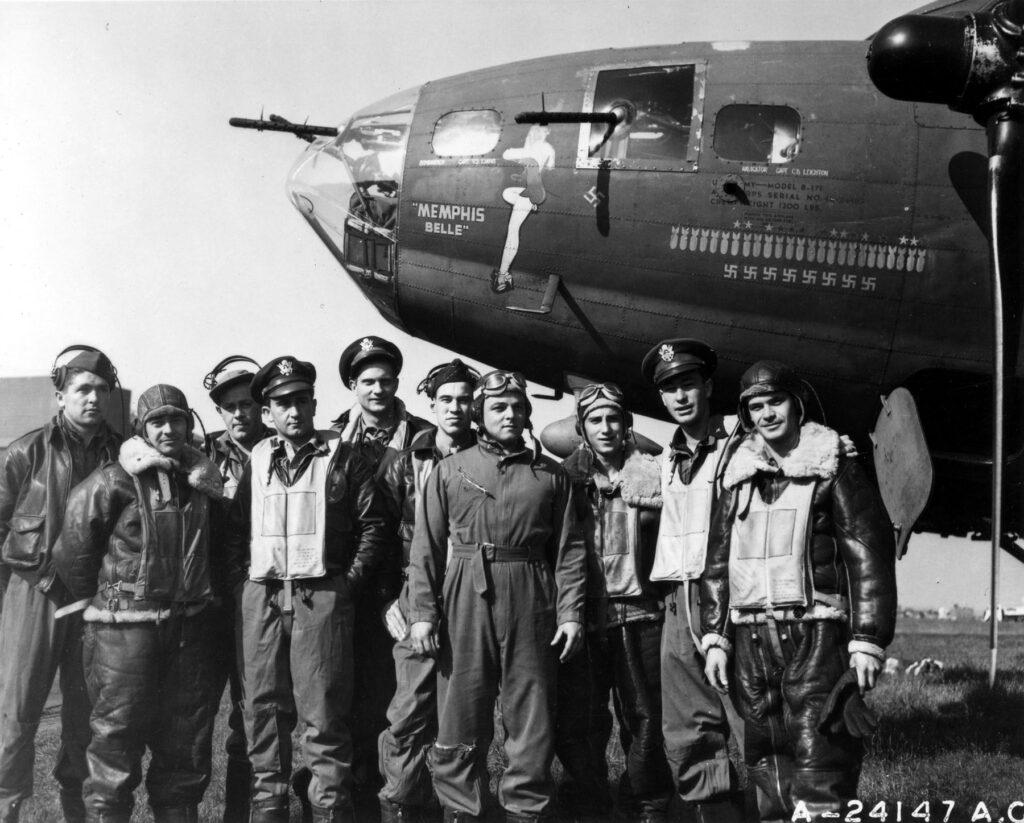
The first to complete 25 combat missions was the crew of B-24 Liberator named “Hot Stuff” dropping bombs on Naples, Italy on February 7, 1943 – three-and-a-half months before “ Memphis Belle ” flew her 25th mission. “Hot Stuff” and her crew went on to fly five additional missions before she and her crew were recalled to the United States, where they were scheduled to go on a War Bonds Tour .
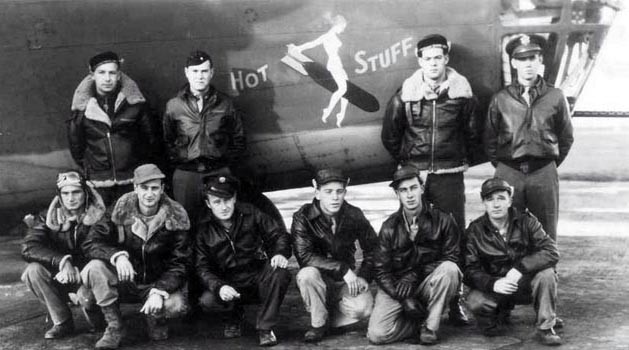
In early May 1943 as the crew prepared for their flight to the States for their War Bonds publicity tour, they got a call from the office of Lt. General Frank M. Andrews , Commander of the European Theater of Operations, asking if he could hitch a ride back to the States. Andrews, an experienced, instrument-rated pilot, bumped the normal co-pilot off the plane and flew in his place. Also aboard were Andrews’ staff and four clergymen. Five other crewmen were bumped to make room for Andrews and his entourage.
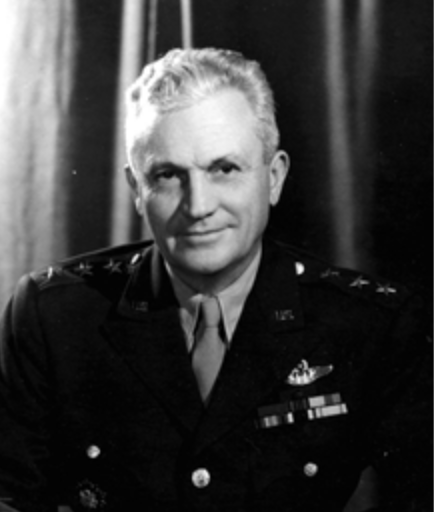
The first refueling stop before heading out over the Atlantic was scheduled for Prestwick , Scotland, but the crew decided to fly directly to their second refueling stop at Reykjavik, Iceland. Closing in of Reykjavik, they ran into snow squalls, low clouds, and rain. After several landing attempts, “Hot Stuff” crashed into the side of 1,600-foot-tall Mount Fagradalsfjall , near Grindavik, Iceland. Upon impact, the aircraft disintegrated except for the tail gunner’s turret, which remained relatively intact. Of the 15 aboard, 14 died. Miraculously the injured tail-gunner, Sgt. George Eisel survived the crash. Because his leg got tangled up in heavy wreckage, he couldn’t move. Twenty-four hours later, he was rescued and the bodies recovered.
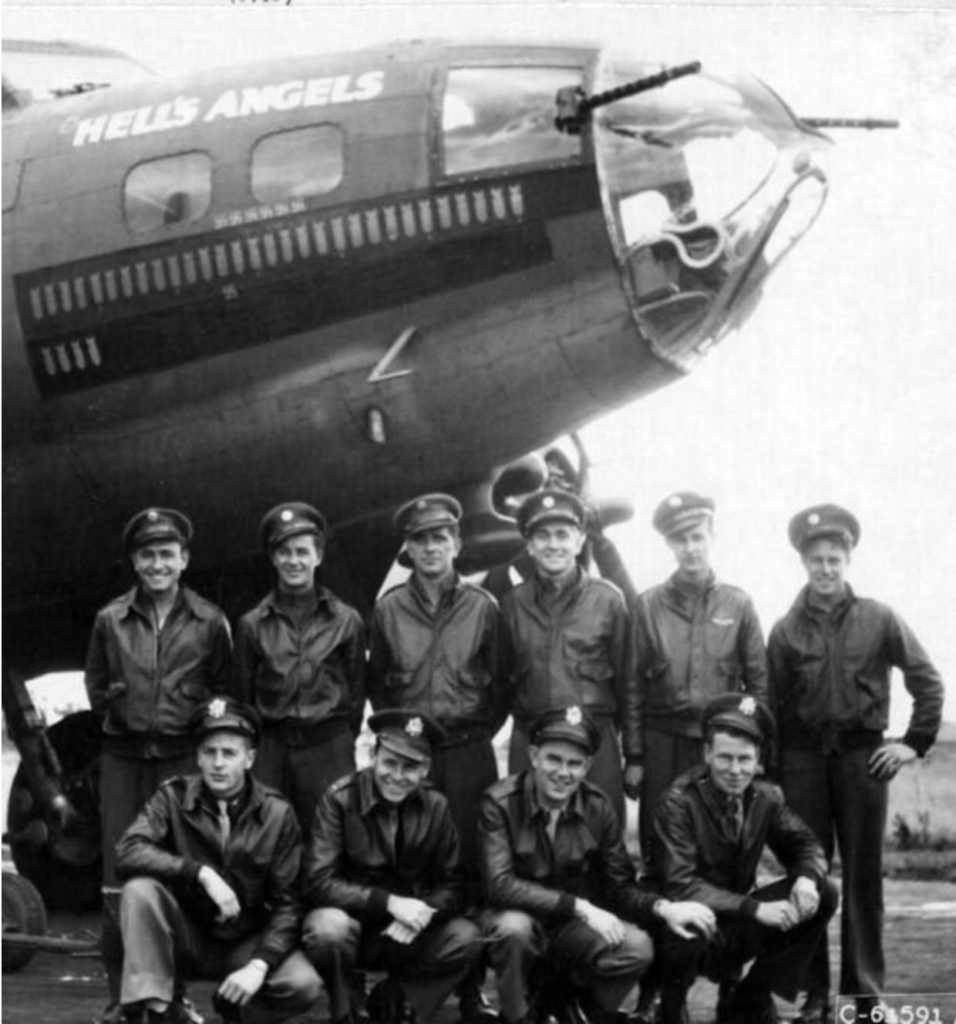
In 1945 Camp Springs Air Base in Prince Georges County , Maryland, was renamed Andrews Field in Gen. Andrews honor. It has since been renamed Joint Base Andrews.
The “Hot Stuff” and her crew were soon forgotten. “Hell’s Angels” a B-17F Flying Fortress became the first 8th Air Force B-17 to complete 25 combat missions in June 1943. At the end of their tour, the crew of “Hell’s Angels” signed on for a second tour and continued to fly, going on to fly 48 missions, without ever turning back from their assigned target. The aircraft was returned to the states on January 20, 1944, for its own publicity tour.
Since 1943 Word War II aviation history considered the “Memphis Belle” as the first heavy bomber to reach the 25-mission mark. Eyewitnesses and early documents tell a different story:
“Hot Stuff” was the first B-24 crew and the first heavy bomber to complete 25 combat missions on February 7, 1943.
“Hell’s Angels” was the first B-17 crew to complete 25 combat missions on May 13, 1943.
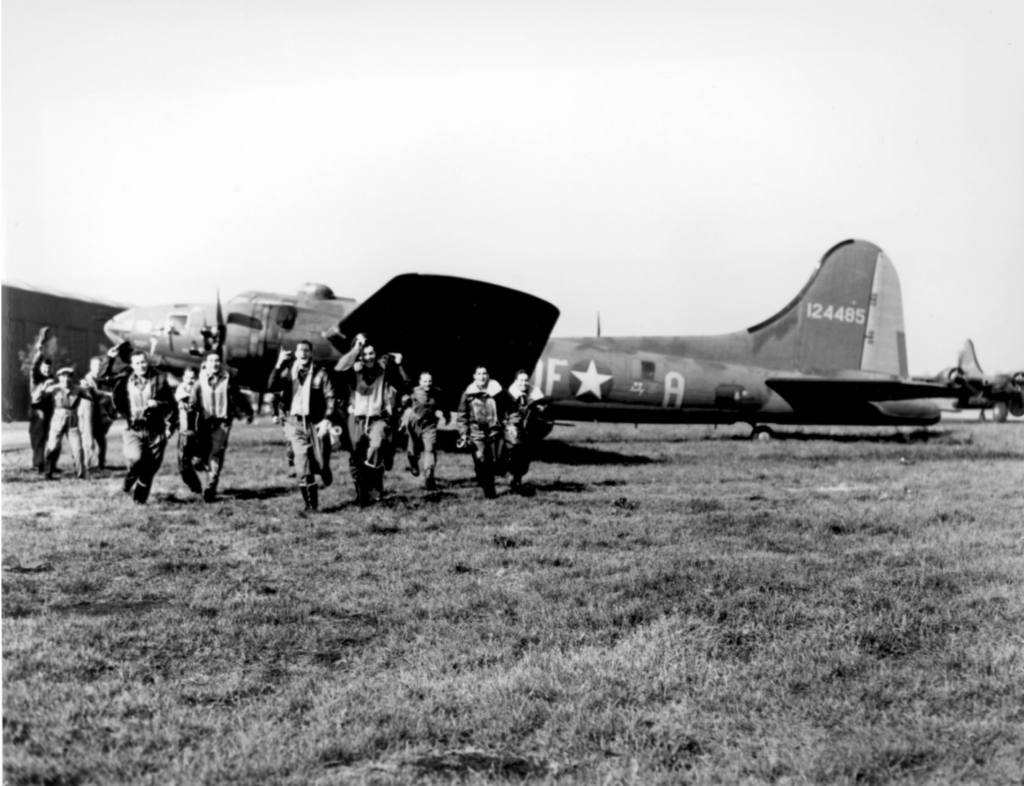
Coming it third place was the “Memphis Belle, ” which completed 25 combat missions on May 19, 1943. (Photo is a jubilant “Memphis Belle” crew following their 25-mission)
So why did the U.S. Army Air Force promote the “Memphis Belle” as the first heavy bomber to fly 25 combat missions?
According to Warbird News, our government was anxious to report uplifting and inspiring stories of the war that would capture the American public’s imagination. For the USAAF it was heavy bombers crews that successfully reached 25 combat mission in defiance of actuarial norms.

“Memphis Belle” Hit That Momentous Milestone Without a Crewman’s Death
Because the “Memphis Belle” hit that momentous milestone without a crewman’s death made her the likely candidate to be first to return home for a War Bond tour.
Americans, for better or worse are conditioned to respond to a happy ending, especially when it goes against all probability.
Tags: "Hell's Angels" , Audie Murphy , B-17F , John Basilone , Liberty Bonds , Memphis Belle , Norman Rockwell , Pearl Harbor , U.S. Army Air Force , United States , USAAF , War Bonds , War Bonds Tour , World War I , World War II
The Memphis Belle was not the first B17 to complete 25 missions. It was an airplane named “Hells Angels”.
Submit a Comment Cancel reply
Your email address will not be published. Required fields are marked *
Save my name, email, and website in this browser for the next time I comment.
Submit Comment
- Skip to primary navigation
- Skip to main content
- Skip to footer
- Hours and Admission
- Exhibitions
- Curriculum Lab
- Norman Rockwell Museum Collection
- Archives and Library
- Rockwell Center for American Visual Studies
- Illustration History
- Frank Schoonover Collection Raisonné
- Make a Gift
- Become a Member
- Staff Directory
- Norman Rockwell Museum e-newsletter sign-up
- What’s My Rockwell Worth? FAQ

Rockwell’s Four Freedoms
In the spring of 1942, Norman Rockwell was working on a piece commissioned by the Ordnance Department of the US Army, a painting of a machine gunner in need of ammunition.
Posters featuring Let’s Give Him Enough and On Time were distributed to munitions factories throughout the country to encourage production. But Rockwell wanted to do more for the war effort and determined to illustrate Roosevelt’s Four Freedoms . Finding new ideas for paintings never came easily, but this was a greater challenge.
While considering his options, Rockwell by chance attended a town meeting where a Vermont neighbor was met with respect when he rose among his neighbors to voice an unpopular view. That night he awoke with the realization that he could best paint the Four Freedoms from the perspective of his own experiences, using everyday scenes as his guide. Rockwell made some sketches and, accompanied by fellow Saturday Evening Post artist Mead Schaeffer, went to Washington to propose his ideas.
The timing was wrong—the Ordnance Department did not have the resources for another commission. Disappointed, Rockwell stopped at Curtis Publishing Company in Philadelphia on his way home and presented his concept to Post editor Ben Hibbs. Hibbs immediately made plans to publish the illustrations, giving Rockwell permission to interrupt his cover work for a period of three months. He “got a bad case of stage fright,” though, and it was more than two months before he even began the project. “It was so darned high-blown,” Rockwell said. “Somehow I just couldn’t get my mind around it.” Despite his early misgivings, the paintings were a phenomenal success. After their publication, the magazine received thousands of requests for reprints, and in May 1943, the Post and the US Department of the Treasury announced a joint campaign to sell war bonds and stamps capitalizing on Rockwell’s vision.
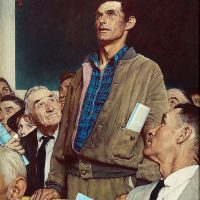
Image credits: Freedom of Speech , Norman Rockwell. 1943. ©SEPS: Curtis Publishing, Indianapolis, IN. Freedom of Worship , Norman Rockwell. 1943. ©SEPS: Curtis Publishing, Indianapolis, IN. Freedom from Want , Norman Rockwell. 1943. ©SEPS: Curtis Publishing, Indianapolis, IN. Freedom from Fear , Norman Rockwell. 1943. ©SEPS: Curtis Publishing, Indianapolis, IN.
Norman Rockwell’s Creative Process
In the summer of 1942, when he was contemplating the Four Freedoms , Norman Rockwell was at the peak of his career and one of the most famous imagemakers in America. Though he struggled for months with how Roosevelt’s ideas could most effectively be portrayed, he resolved to root the universal, symbolic images in his own experiences and surroundings, using his Arlington, Vermont neighbors as models.
As was his complex, customary process, the artist’s thumbnail drawings and large scale charcoal sketches, no longer extant, were followed by preliminary color studies in oil before he finished his paintings seven months later. Freedom from Want and Freedom from Fear were clearly conceptualized in his mind from the start, but Freedom of Speech and Freedom of Worship presented greater challenges. For each painting, he carefully choreographed the expressions and poses of each of his chosen models, and worked closely with his studio assistant Gene Pelham to photograph them for future reference. Freedom of Worship was initially set in a barber shop with people of different faiths and races chatting amiably and waiting their turn, a notion that Rockwell ultimately rejected as stereotypical. For Freedom of Speech , he experimented with several different vantage points, including two that engulfed the speaker in the crowd. In the final work, the speaker stands heads and shoulders above the observers, the clear center of attention. Fortunately, Rockwell’s Four Freedoms escaped destruction in a fire that destroyed his Arlington, Vermont studio shortly after they were delivered to The Saturday Evening Post . His reference photographs and most related artworks did not survive the blaze.
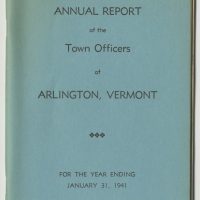
Image credits: Annual Report – Arlington, VT – 1941 , 1941. Freedom of Speech (study) , Norman Rockwell. 1942. Freedom of Speech (sketch) , Norman Rockwell. 1942. ©SEPS: Curtis Publishing, Indianapolis, IN. Freedom of Worship (study) , Norman Rockwell. 1942.
The Four Freedoms War Bond Show
In April 1943, one month after their appearance in the Saturday Evening Post , Rockwell’s original paintings began a sixteen-city Four Freedoms War Bond Show tour to publicize the Second War Loan Drive. The U.S. Treasury Department, realizing their potential to generate revenue through the sale of war bonds and to boost public morale, partnered with the Post to sponsor the tour.
Starting in Washington, DC, and gradually working its way around to points west, the exhibition featured hundreds of other artworks, posters, pamphlets, and manuscripts. Each stop vied to offer the biggest thrills and the most notable celebrity appearances, and volunteers were at the ready to would sell war bonds to an avid public. At the Boston stop, local organizers brought in the original models from Rockwell’s paintings. In Buffalo, visitors purchased enough war bonds to sponsor four new fighter-bombers, each named after one of the Freedoms. Portland, Oregon, used “over 1,000 column inches of newspaper publicity” to attract more than one hundred thousand bond purchasers to that city’s stop on the tour. From June 16 to 26, 1943, the exhibition was on view at New York’s Rockefeller Center, and overall, became the rallying point of a massive national outpouring of patriotic enthusiasm.
Rockwell himself ended up being part of the tour, but only for the first stop. He appeared at Hecht’s department store in downtown Washington, DC, but found that he had no appetite for the nonstop routine of signing autographs, meeting celebrities, and talking to reporters. Asked to continue with the exhibition, Rockwell allowed the protective Post editor Ben Hibbs to say, “No, Norman’s going to stay home and do Post covers.” Despite that, the tour did extremely well, raising $132 million in war bond sales and reached 1.2 million war-weary viewers. As important was the elevation of Roosevelt’s Four Freedoms in the public consciousness, and their embrace as democratic ideals worth fighting for.
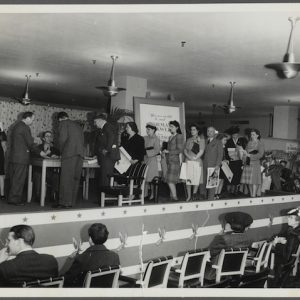
Image credits: Norman Rockwell Signing War Bonds Posters, 1943 . Norman Rockwell Museum Collection. © Norman Rockwell Family Agency
Download our Museum App!

Norman Rockwell Museum
9 Glendale Rd / Rte 183 Stockbridge , MA 01262
413-298-4100
www.nrm.org
MAP and DIRECTIONS
- About the Exhibition
- Exhibition Venues
- Interactive Timeline
National Museum of African American History & Culture
- Plan Your Visit
- Group Visits
- Frequently Asked Questions
- Accessibility Options
- Sweet Home Café
- Museum Store
- Museum Maps
- Our Mobile App
- Search the Collection
- Exhibitions
- Initiatives
- Museum Centers
- Publications
- Digital Resource Guide
- The Searchable Museum
- Freedmen's Bureau Search Portal
- Early Childhood
- Talking About Race
- Digital Learning
- Strategic Partnerships
- Ways to Give
- Internships & Fellowships
- Today at the Museum
- Upcoming Events
- Ongoing Tours & Activities
- Past Events
- Host an Event at NMAAHC
- About the Museum
- The Building
- Meet Our Curators
- Founding Donors
- Corporate Leadership Councils
- NMAAHC Annual Reports
December 7, 1941 Heroes
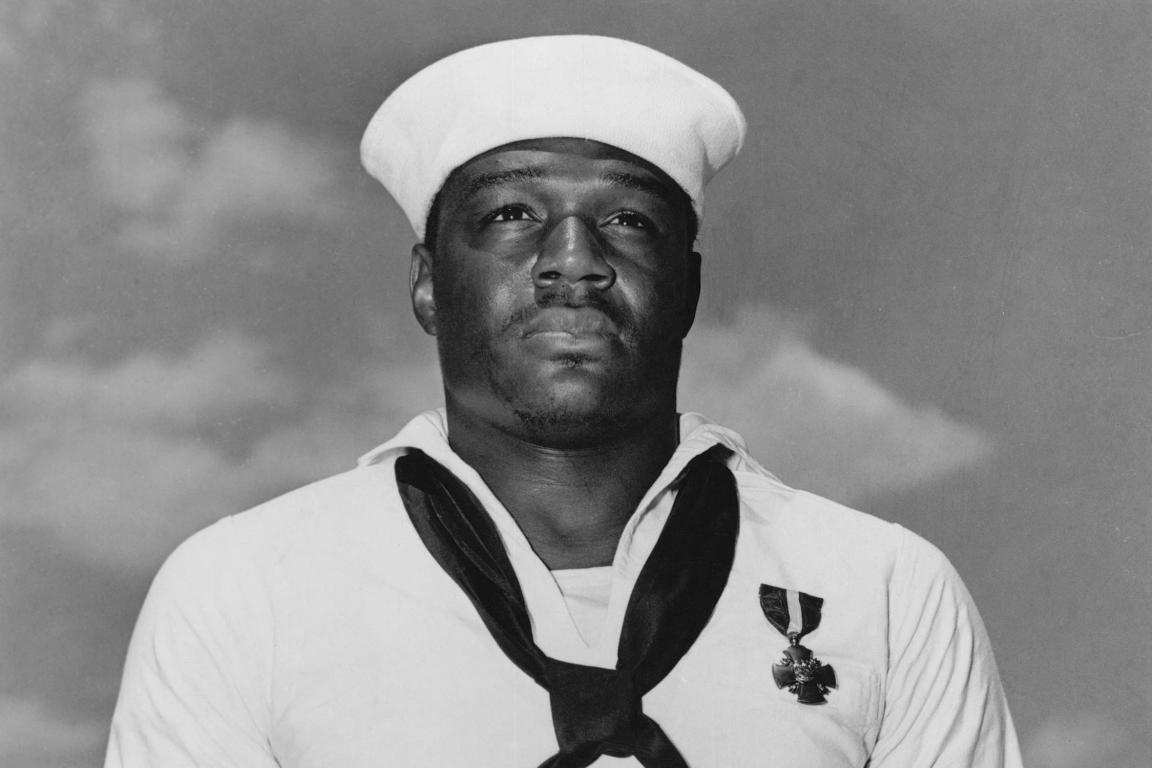
“Yesterday, December 7, 1941 — a date that will live in infamy — the United States was suddenly and deliberately attacked by the naval and air forces of the Empire of Japan.”
With those historic words to Congress, Franklin Delano Roosevelt declared war on Japan and the United States entered World War II.
Even today, the surprise attack on Pearl Harbor is indelibly etched into the minds of many older Americans, a number of whom fought in that global conflict.
Sixty-eight years ago today, Doris “Dorie” Miller was stationed at Pearl Harbor on the battleship USS West Virginia. As an African American serving his nation in 1941, that meant serving in a segregated Navy. African Americans were rarely detailed beyond the mess — preparing and serving food, doing laundry or other menial tasks. Miller's assignment was no exception, he was a Mess Attendant Third Class.
That morning, as the Japanese unleashed their attack, Dorie Miller would step into our American story by becoming one of the first American heroes of World War II.
When the alarms sounded, Miller rushed from the bowels of the USS West Virginia onto its deck. Amidst the chaos, Miller immediately began carrying wounded men to safety. When Miller was ordered to the bridge, he found Captain Mervyn S. Bennion mortally wounded, and the ship still under heavy attack.
Under intense enemy fire, Miller manned a machine gun and began firing on Japanese planes. His unselfish heroics were praised by his superiors when they petitioned the War Department to award Miller with one of the Navy's highest honors, the Navy Cross, which was awarded on May 27, 1942 at Pearl Harbor.
Admiral C. W. Nimitz, CinCPac, pins Navy Cross on Doris Miller, at ceremony on board warship in Pearl Harbor, May 27, 1942.
On the mainland, Miller's actions resonated with not only African Americans, but Americans of every race. Newspapers bannered his story and called on the Navy to bring Miller home for a war bond tour as the War Department had done with many white heroes. The public outcry led to Miller becoming the first African American serviceman sent on a WWII war bonds tour.
In 1942, he became one of the first African Americans to be featured on a Navy recruiting poster. That same year his story was dramatized on the CBS radio series, "They Live Forever."
Miller was serving on the escort carrier the USS Liscome Bay on November 24, 1943 when a single Japanese torpedo smashed through its hull and ignited a bomb magazine within the ship. The massive explosion caused the ship to sink in minutes. Of the 918 sailors on board, 646 were killed, Dorie Miller among them.
In June 1973, Miller's bravery was recognized again when the Navy commissioned a Knox-class frigate the USS Miller, named in tribute to Dorie. At that time, the USS Miller was only the fourth Navy vessel named for an African American.
The United States Postal Service has announced that Miller will be one of four "distinguished sailors" to adorn a 44 cent commemorative stamp to be released in February 2010.
Miller was far from being the first African American to be awarded a medal for his heroic act. Members of the famous "Buffalo Soldiers" during the U.S. Cavalry's western campaigns in the 1800s had won many medals, including our nation's highest award, the Medal of Honor.
However, World War II placed our segregated forces under a microscope, and the actions of men like Dorie Miller served to underscore, yet again, the injustice of our segregated armed forces.
Sixty-eight years later, Americans of all races and gender serve together in defense of our country. As Chairman of the Joint Chiefs of Staff from 1989-1993, Colin Powell served as the highest ranking officer in our military, the first African American to hold that position.
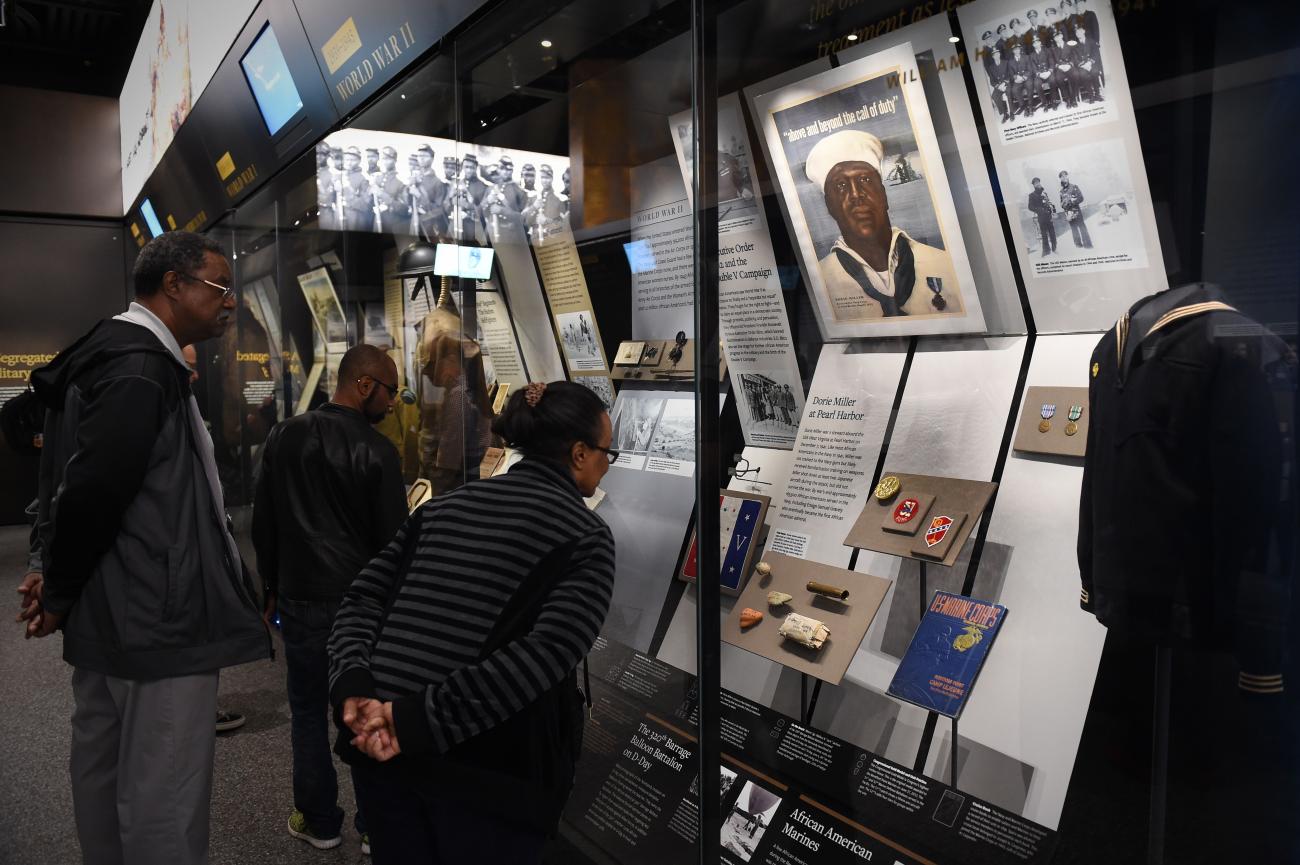
Visitors view an exhibit that highlights the legacy of Mess Attendant Doris "Dorie" Miller at the Smithsonian National Museum of African American History and Culture.
This is just one Page from Our American Story. However, it serves to underscore the mission of the Museum: to open a door to conversation and understanding not only to the African American experience, but also to how that experience has played an integral role in shaping our nation from its very beginnings.
Thank you for your support.
All the best,
Lonnie Bunch Founding Director
Published: December 7, 2009
Subtitle here for the credits modal.

The Definitive Voice of Entertainment News
Subscribe for full access to The Hollywood Reporter
site categories
Pearl harbor turns 80: carole lombard was hollywood’s first world war ii casualty.
The starlet and wife of Clark Gable perished along with 21 others after a flight on her war bond tour crashed outside Las Vegas, as chronicled in this exclusive excerpt from the new book, 'Hollywood Victory: The Movies, Stars, and Stories of World War II.'
By Christian Blauvelt
Christian Blauvelt
- Share this article on Facebook
- Share this article on Twitter
- Share this article on Flipboard
- Share this article on Email
- Show additional share options
- Share this article on Linkedin
- Share this article on Pinit
- Share this article on Reddit
- Share this article on Tumblr
- Share this article on Whatsapp
- Share this article on Print
- Share this article on Comment

On Dec. 22, 1941, Carole Lombard and Clark Gable, Hollywood’s most glamorous couple, called an emergency gathering of the Victory Committee’s actors branch at the Beverly Wilshire hotel. Fifteen days earlier — on Dec. 7, exactly 80 years ago today — Japan had launched a surprise attack on Pearl Harbor that killed 2,403 Americans and brought the country into World War II. The swanky affair, attended by Gary Cooper and Bette Davis, mobilized the stars: Funds needed to be raised, troops entertained, the wounded comforted. As recounted in Hollywood Victory: The Movies, Stars, and Stories of World War II , a new book by Christian Blauvelt about the industry’s involvement in World War II, no one had thrown themselves into the war effort more than Lombard, 33.
Related Stories
Hollywood flashback: 25 years ago, 'the matrix' sent audiences down a rabbit hole, hollywood flashback: 50 years before 'arthur the king,' benji saved the day.
In January 1942, the actress embarked on a tour to sell war bonds. A last-minute decision to surprise Gable in L.A. led her to book a TWA flight with her mother from Indianapolis, where the Indiana-born Lombard raised $2 million. The three-leg trip culminated in a Jan. 16 flight from Las Vegas to Burbank, but the plane, also filled with servicemen, crashed right after takeoff, killing all 22 on board and making Lombard Hollywood’s first war casualty. Her last film, Ernst Lubitsch’s To Be or Not to Be , satirizing the Nazi occupation of Poland, opened Feb. 19.
In an excerpt from Hollywood Victory, shared below by The Hollywood Reporter, Blauvelt returns to that momentous chapter of U.S. history that affected every aspect of American life — including Hollywood’s dream factory.
The chairman of the actors branch of the Hollywood Victory Committee was Clark Gable, flanked by his wife, Carole Lombard, at that Roosevelt Hotel meeting. They had been married for more than two years, since they tied the knot during a production break on Gone with the Wind (1939). It was his third marriage, and her second. They were both Midwesterners, she from Fort Wayne, Indiana, he from Cadiz, Ohio. Their nicknames for each other? “Ma” and “Pappy.” In fact, they could hardly have been a more perfect match for each other: they shared the same rough-and-tumble sense of humor that seemed at odds with the gentility Hollywood usually tried to project. Suspicious of the possibility that Gable might stray before leaving on her own war bonds tour, Lombard left a naked, blonde mannequin in his bed to keep him company.
Gable and Lombard threw themselves enthusiastically into the war effort. They lent horses from their Encino ranch to a group of mounted air-raid wardens who patrolled the San Fernando Valley. On December 22, fifteen days after Pearl Harbor, Gable convened a meeting of the actors branch of the Victory Committee at the Beverly Wilshire Hotel, where he’d once lived. This event was considered one of the last all-out displays of Tinseltown glamour before more frugal days ahead. In attendance were Myrna Loy, Claudette Colbert, Charles Boyer, Bob Hope, Rosalind Russell, John Garfield, Bette Davis, Tyrone Power, Gary Cooper, Ginger Rogers, Ronald Colman, Irene Dunne, Jack Benny, and Cary Grant —who had donated $100,000 of his $160,000 Arsenic and Old Lace salary to wartime charities. The women were dripping in jewels and furs. But all agreed that, in addition to the fundraising efforts they’d embark upon, they’d spend time visiting with and entertaining ordinary soldiers and sailors, particularly those who’d ended up in military hospitals. To start, those on the committee who were MGM stars hosted a Christmas Day party on the studio lot for enlisted men. Gable served as master of ceremonies for a nearly impromptu revue featuring Red Skelton, Eleanor Powell, Judy Garland, and Mickey Rooney. Wallace Beery played Santa Claus. Across town, Jimmy Stewart, on leave from Moffett Field for the holidays, played Santa Claus as well—at Henry Fonda’s house for the amusement of Hank’s four-year-old daughter, Jane.
The night before, on Christmas Eve, the public had heard “White Christmas” for the first time when Bing Crosby sang it on his NBC radio show Kraft Music Hall ; this debut didn’t make a big impression with the audience. Overall, it was a quiet Christmas in Hollywood: both a reprieve from the trauma of the previous eighteen days and a kind of collective deep breath in which everyone could brace themselves for the struggles to come. There was anxiety too about the possibility that the Japanese could next launch an air raid on Los Angeles. Or even attempt an invasion.
On Christmas Eve, Lombard had wrapped To Be or Not to Be . What she really wanted for Christmas was her husband in uniform. But it had to be real service, “not one of those phony commissions,” she wrote. Gable wanted to sign up too, but he had one last film to make for Louis B. Mayer: a drama called Somewhere I’ll Find You (1942), about innocents caught up in the Japanese conquest. It’s believed Lombard even personally lobbied FDR to make sure her husband would be able to see action. First, though, she had a mission of her own.
Lombard embarked on a multicity tour to sell war bonds during the second week of January 1942. The Victory Committee was now working directly with the Treasury Department and Internal Revenue Service. With her husband starting to shoot Somewhere I’ll Find You , she set out for Salt Lake City and then Chicago. She was filled with patriotic zeal at the enthusiasm of the crowds in these cities, telegraphing her husband, “Hey Pappy, you better get into this man’s army.” Finally she made it to Indianapolis so fans could cheer their fellow Hoosier who’d risen to Hollywood stardom. For her home state, Lombard had a fundraising target of $500,000 from the Treasury Department. Instead, in one day she raised $2 million.
Maybe Lombard thought that such a huge success meant she’d done her part. Or maybe rumors had reached her that Gable was allegedly having an affair with his costar Lana Turner. Either way, she canceled the rest of her trip, including the return journey to L.A. by train. She’d rush back to her husband by air. The tickets for herself and her mother were for TWA Flight 3, the next flight out of Indianapolis, at 4:00 a.m. on January 16. Nonstop cross-country travel was impossible in those days, so Flight 3 needed to make stops in St. Louis, Albuquerque, and Las Vegas. That model of aircraft, a Douglas DC-3-382 propliner, had a cruising speed of just 207 mph. So by the time it took off from Las Vegas at 7:05 p.m. Pacific Time for the final leg to Burbank, complete darkness had already fallen. At Albuquerque, fifteen of the nineteen passengers had been replaced by a contingent of Army Air Corps personnel and a new three-person crew. Since the flight overbooked, the Air Corps asked if Lombard and her mother could stay there overnight and catch the next plane. But Lombard argued that her fundraising efforts made her just as essential to be on that plane as any of the servicemen. Fifteen minutes after takeoff from Las Vegas, Flight 3 crashed into Potosi Mountain, hitting a vertical cliff face head-on about eighty feet from its top. The plane had strayed seven miles from its intended course.
When word of the crash reached MGM that night, Louis B. Mayer’s crisis manager and “fixer” Eddie Mannix immediately arranged for him and Gable to travel to Las Vegas, booking them both bungalows at the El Rancho Vegas Hotel while search parties scoured the scene. Gable held out hope that his wife might still be alive. Wracked with worry, he stayed behind at the bungalow while Mannix went to the crash site. Gable thought a soft glow in the distance was flames from the wreckage. When Mannix got there, a grisly scene awaited. Blood and personal effects were sprinkled on the waist-high snow around the mangled fuselage; the bodies, compressed into a ten-foot space, unidentifiable at first glance. A little while later, Mannix sent him a telegram: “No survivors. All killed instantly.” All Mannix could find was a strand of blonde hair Gable would always believe had come from his late wife. Though he wanted to enlist in the Armed Forces, as his wife had wanted him to do, he still had to finish Somewhere I’ll Find You for MGM—a film newly poignant even from its title alone.
Gable was never the same again. Though he had initially refused alcohol in the days after he received that fateful telegram in Las Vegas, saying he was “already numb,” he’d start regularly drinking a quart of scotch a day, a habit he’d keep for the rest of his life. The “King of Hollywood” began to withdraw into himself.
Each day on set he took his meals alone in his trailer, never sitting in his usual chair at the end of a large table at the MGM commissary, where he had been known to hold court. It was almost like his throne, his seat of power where he lorded over the eight-thousand-square-foot dining room—as much a fixture for everyone who worked on the lot as Leo the Lion himself.
When Gable finally did enlist in the Army Air Forces in August 1942, some onlookers said they thought he had a death wish. He didn’t. In fact, his work during the war, including his filming of a documentary, deserved more praise than it’s ever properly received. But this was a heartbreak he’d never get over.
February 19, 1942, saw the premiere of Lombard’s final film: To Be or Not to Be . In so many ways, the Jack Benny comedy from Ernst Lubitsch was as daring as The Great Dictator . And critics hailed it as a triumph for Lombard, if not in many other respects. In the sixteen months since Chaplin’s film, the mood of the country had changed dramatically. No one wanted to laugh at Nazis now. Few took their ideology seriously, sure, but they were too great a threat to disarm with chuckles alone. Benny’s own father walked out of the movie after seeing his son in a Nazi uniform. Lubitsch, Jewish like Benny, even had to defend to The Philadelphia Inquirer that he was not “a Berlin-born director who finds fun in the bombing of Warsaw.” In the years after the war, people finally came to consider To Be or Not to Be one of Lubitsch’s best films. Benny’s own father, after furious explanations from his son, went to see it again. Giving it another chance, he loved it so much he ended up seeing it forty-six times.
Lombard had an incandescent final statement on film. It was not enough to allay Gable’s grief. “Why did Ma have to go?” Gable kept asking his friends. “Did you ever see anyone more beautiful? There was never a person in the world who was as generous, who was so full of fun. God damn it, why Ma?”
It hadn’t even been six weeks since Pearl Harbor when Lombard died on January 16, 1942. She was widely considered to be Hollywood’s first casualty of the war. But she would not be the last.
Christian Blauvelt is the managing editor at IndieWire and author of books including Cinematic Cities: New York and Star Wars Made Easy .
This story first appeared in the Dec. 8 issue of The Hollywood Reporter magazine. Click here to subscribe.
THR Newsletters
Sign up for THR news straight to your inbox every day
More from The Hollywood Reporter
David barrington holt, former head of jim henson’s creature shop in l.a., dies at 78, box office: ‘monkey man,’ ‘first omen’ coming in lower than expected as ‘godzilla x kong’ stays no. 1, carla gugino says she has “ptsd” from working with sexist directors, ‘wicked’ director jon m. chu to be honored at cinemacon luncheon with cultural impact award, ‘ghostbusters’ star emily alyn lind explains why her ‘frozen empire’ character was kept secret, ‘star wars’: beau willimon to co-write james mangold’s movie (exclusive).
Paterson Museum highlights Abbott and Costello war bond tour
PATERSON – Bud Abbott and Lou Costello are best known for their comedy routines, but the Paterson Museum this weekend will unveil an exhibition dedicated to their patriotic efforts.
The exhibit focuses on the comic duo’s war bond drive in 1942, a tour that museum officials say included stops in 80 cities in 22 states, raising $85 million for America’s military during World War II.
At the conclusion of that tour, Paterson native Costello received a 21-inch “loving cup” at Eastside High School in honor of his war bond efforts, according to the museum. That cup was on its own tour for the past 75 years, being passed among collectors and others in Los Angeles, Wisconsin and Florida.
But last year, the cup ended up back in Paterson, when someone donated it to the local museum. Museum director Giacomo “Jack” DeStefano said the cup donation became the inspiration for the new exhibit, “Keep ‘em Buying: Abbott & Costello's 1942 War Bond Drive."
The exhibit’s grand opening starts at noon on Sunday, with the recreation of the Eastside High presentation of the cup to Costello, a show featuring famous Abbot and Costello comedy skits by impressionists Gil “Bud” Palmer and Lou Sciara, a question and answer session about the war drive and a screening of the duo’s “Buck Privates” movie.
Admission for the grand opening will be $10, with proceeds going to the Paterson Museum Foundation. Children under 12 are free. The Abbott and Costelllo war bond exhibition runs through Feb. 2, 2020.
The Paterson Museum is located at 2 Market Street on the corner of Market and Spruce streets in the heart of the Paterson Great Falls National Historical Park. The museum’s visiting hours are Monday through Saturday from 9:30 a.m. to 4:30 p.m. For more information, call 973-321-1260.
Email: [email protected]
More Paterson news
Gurbir Grewal: Paterson police picked for new use-of-force reporting pilot program
Suits: New accusers file suits alleging sex abuse by defrocked Paterson Diocese priest
Music: The All City Band brings music back to Paterson schools
The Submarine That Toured America
The Submarine Force Museum is known for being able to tour the first ever nuclear-powered submarine. While the Nautilus is the only submarine at the museum that can be toured from the inside, it doesn’t mean that it is the only submarine on display. Standing outside of the museum doors, a row of smaller submarines greets visitors. People may be surprised to see a submarine on display, on concrete, on a walkway in front of the museum. The “Type A”

Photo of the HA-8 outside the museum. Photo Courtesy of Erica Buell
submarine on display is not your typical submarine and recalls a time in our nation’s history when a Japanese submarine was generating ticket sales across the country.
On December 7, 1941, America was thrust into WWII with the attack on Pearl Harbor. The aerial strike in Hawaii was devastating and began a series of events that would lead our government to declare war on Japan. While the facts of that day can be found everywhere, many people aren’t aware of the Japanese naval attack that was also occurring at the same time. The Imperial Japanese Navy sent a group of submarines to surround Oahu to sink any American ships that attempted to flee. Some of these submarines were equipped with top secret “mini-submarines” that were each armed with two torpedoes and carried two crew members. The plan was for these “mini submarines” to surface and fire their torpedoes during the aerial attack. While we all know the very devastating effect of the air attack, the submarines failed in their mission. Only one was able to escape but was sunk once out of the harbor. Another washed ashore the next day and its surviving crew member was captured. A third submarine was sunk before the attack on Pearl Harbor. It had been seen following a U.S. ship that

https://chs.org/2010/05/buy-war-bonds/
was heading into the harbor. The failed mission of the “mini submarines” is not the end of their short history. The submarine captured by the U.S on December 8 th was studied by our government and then was used to garner support for the war effort and sell war bonds. This was an effective way to show the American people exactly what they were fighting against.
War bonds are debt securities that help to finance military efforts in times of war. Sold by the government, they are usually retail bonds marketed to the public or wholesales ones sold on the stock market. During WWII, posters encouraged citizens to show their patriotism and buy war bonds and many different events were held throughout the country to encourage sales. However, promotional art and film reels of the frontline could only elicit so much support. But a Japanese submarine provided a physical reminder of what Japan had done to them and promote the rally cry “Remember Pearl Harbor”. The “mini submarine”, or HA-19, that was captured on December 8 th was sent around the United States on war bond rallies between 1942 and 1945. Admission to view the submarine was made possible through the purchase of war bonds and stamps. One stop on its tour was Washington D.C. on April 3, 1943.

postcard printed to publicize the submarine’s tour showed the trailer on which it was transported and exhorted American’s to avenge Pearl Harbor by buying war bonds. Photo courtesy of Arnold Putnam.
Upon arriving in Alexandria, Virginia, $40,000 was raised in a little over 20 minutes with a total of $1,061,650 by the end of the day. When she made her way to Hartford, Connecticut, $250,000 worth of bonds were sold with over 20,000 people descending to the city center to view the submarine. War bonds were crucial to the war effort and kept troops supplied with what they needed. While the HA-19 was the more popular

A sailor posed next to the conning tower of the HA-19 on the Capitol grounds. The war bond rallies focused on the supposed small stature of the Japanese and their “midget” submarines and likened this smallness of size to smallness of character and to the perceived perfidy of the Japanese sneak attack on Pearl Harbor. Library of Congress
“mini submarine” due to its involvement at Pearl Harbor, she was not the only one to participate in war bond rally tours.
On May 7, 1943, a Japanese midget submarine was salvaged off the coast of Guadalcanal. The HA-8, as she is known, was launched on November 11, 1942 from her carrier submarine I-16. During the launch, her rudder was damaged and lost steering. The mission was aborted and the submarine was scuttled. HA-8 has a length of 79 feet and a displacement of 46 tons. She arrived in Groton as part of one of the War bond efforts between 1943 and 1944. She is just one of four Type A midget submarines on display in the world, including HA-19. While a novelty now, submarines such as HA-8 and HA-19 served as a stark reminder in the 1940’s that the world was not as large as everyone thought. The fight had been brought to our shores, and our military was doing what they had signed up to do – to defend and protect.

HA_8 at the Submarine Museum. Photo Courtesy of Erica Buell
Related Posts

Rest Your Oars…

World War II at 75: The Women at Iwo Jima
#otd in navy history fact of the month, asian/pacific islander heritage in the navy.
Screen Rant
Who was virginia grey anna torv's the pacific character explained.
In The Pacific, Basilone becomes involved with Virginia Grey, a film actress whose prolific career extended far beyond selling war bonds.
- Anna Torv's portrayal of Virginia Grey in HBO's The Pacific offers a glimpse into the fascinating life of a Hollywood actress who had a successful career spanning almost 50 years.
- Despite never becoming an A-lister, Virginia Grey appeared in major films and worked alongside renowned actors, maintaining her career by playing various supporting roles.
- Grey's real-life connection to John Basilone, as depicted in The Pacific, involved their brief romance during their time participating in the war bond tour, with Grey later having a relationship with Clark Gable.
In HBO’s The Pacific , Anna Torv makes a brief appearance as Virginia Grey, a real actress who led a fascinating life. The Pacific offers an expansive, true account of the Pacific Theater of World War II, as seen through the eyes of real Marines. Much like its Eastern front counterpart, Band of Brothers , The Pacific ’s high budget allowed it to take on a vast scope in depicting the numerous real-life figures and details that composed the stories of its lead characters.
One such story takes place during “ Peleliu Landing, ” the fifth episode of The Pacific . In the episode, Sgt. John Basilone, played by Jon Seda in the series, finds himself transferred from the front lines to the war bonds tour following his heroic turn at Guadalcanal and subsequent Medal of Honor. The episode, while depicting Basilone’s rising dissatisfaction with the tour, also features a romance with one of his fellow touring stars, the film actress Virginia Grey. Grey, who’s played in the series by Anna Torv of the Mindhunter cast , was a prolific Hollywood figure.
Who Was Virginia Grey?
While she never attained A-lister fame, Virginia Grey saw a decades-spanning career as a Hollywood actress. Following an acting debut at the age of 10, in the 1927 silent film Uncle Tom’s Cabin , Grey worked consistently in Hollywood for almost 50 years. The actress appeared in numerous major films, including the Marx Brothers’ The Big Store , Another Thin Man , and the musical Hullabaloo . While she was considered a great Hollywood beauty, she generally played a supporting role to bigger stars such as Betty Grable, Micky Rooney, and Rock Hudson.
Grey did see some leading roles in her career, but they were generally in B movies such as the dinosaur film Unknown Island and the schlocky House of Horrors . Nevertheless, the actress was able to maintain a solid career well past the age where parts often dried up for actresses in Hollywood. “ She could play the girl next door or somebody's other woman. And that was what kept her working ” said A-lister Ann Rutherford (via NYT ), but Grey herself had a more pragmatic explanation for her own longevity: “ I consider myself a professional who acts -- not to express my soul or elevate the cinema, but to entertain and get paid for it. ”
Virginia Grey's Connection To John Basilone In Real Life
The Pacific ’s true story of John Basilone’s service career includes his tenure selling war bonds in the States. The series’ depiction of Basilone’s brief romantic entanglement with Virginia Grey is likewise based in fact. Grey’s contributions to the war effort saw her join the war bond tour and act as a frequent volunteer hostess at the star-studded Hollywood canteen, where military servicemen ate for free. It was on the war bond tour that she met John Basilone. Interestingly, the small size of her role in the series corresponds to the brevity of their relationship. After the events of The Pacific , Grey had a romance with actor Clark Gable, although the two never married.
Source: The New York Times
Skip to Main Content of WWII
Researching your pearl harbor veteran.
The discovery of a Pearl Harbor veteran in the family tree leads to discovery of service and sacrifice.
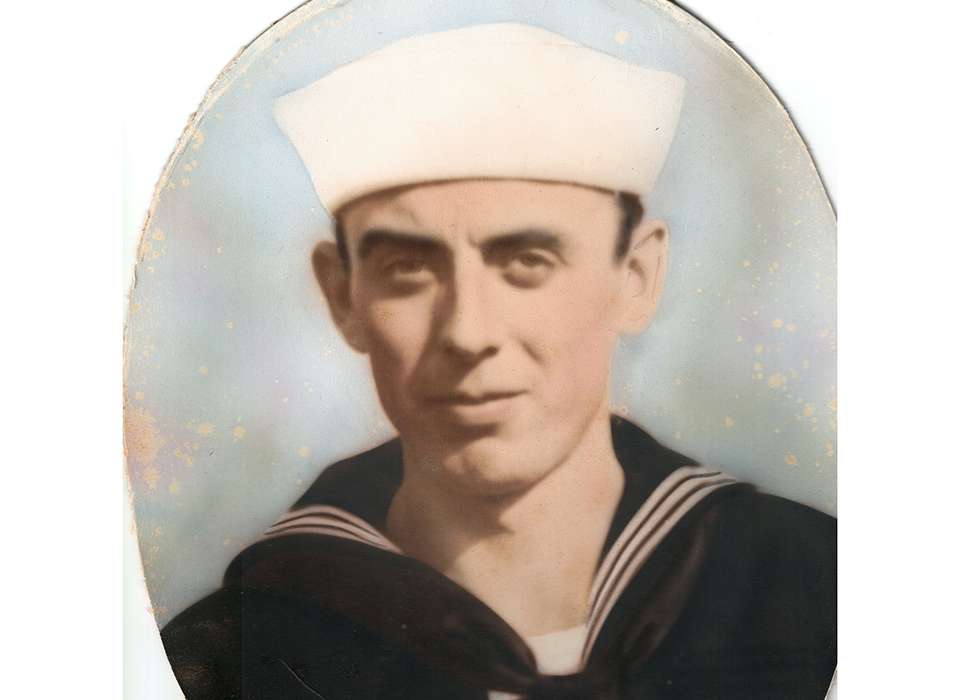
Top Image: John Raymond Stratton’s Service Photo, courtesy of the Stratton-Edens family.
For many, World War II is personal, whether it is a lived experience as a veteran or as a child growing up on the Home Front. However, as these members of our family age, those experiences and family history are often not passed down to the next generation. Those of us who come across a family member who has served are filled with a lot of questions that are often difficult to answer.
Almost two years ago, while tracking down family burial plots, I found a grave marker for one of the surnames on my father’s side of the family. The name on the military plaque was for John Raymond Stratton, born October 23, 1918, and died on December 7, 1941. I noted the name and took a photo of the plaque so that I could do research at a later time.
This name came back to me during the pandemic, when a DNA connection through Ancestry.com reached out to me about links on our family tree. This connection was through the Stratton/Edens family line. To my utter amazement, my “new” cousin verified John Raymond Stratton as my first cousin, twice removed. He even had John’s photo from the Navy. Although my cousin had this information, there was much I wanted to know about my Pearl Harbor veteran. It was through research on genealogy sites, visiting museums, and talking with experts, like those who work with the Defense POW/MIA Accounting Agency (DPAA), that helped to piece together the story of this veteran who can no longer tell his story.
John Raymond Stratton was born on Wednesday, October 23, 1918, in the small town of Holton in Ripley County, Indiana to Frank Stratton and Amy Jane Edens. Through diving into US Census Records from 1920 and 1930, I was able to find that John was one of at least six children. The Edens and Stratton families primarily lived in Ripley and Jennings County and both were farming families. John’s mother, Amy, was my great grandfather’s sister and there is at least one large family photo in which the extended families are photographed together. This photograph, dated August 9, 1925, was given to me by another first cousin, twice removed, Geraldine Edens Hillan. Before Geri passed in 2020, she was able to name almost everyone in the photograph. Sitting to the left of my grandfather, Virgil Edens, in the photograph is John Raymond Stratton at almost seven years old.
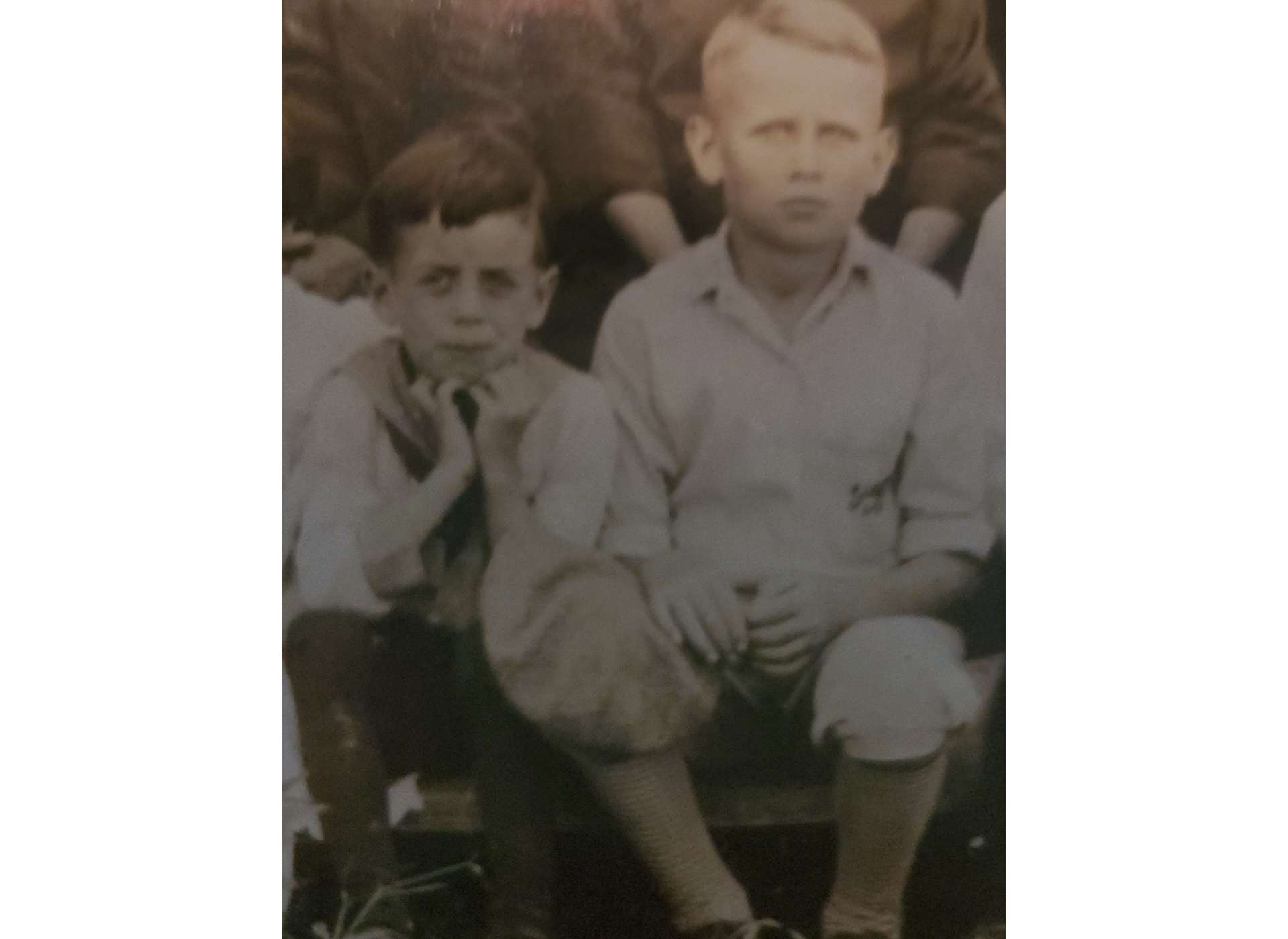
John Raymond Stratton and Virgil Edens, courtesy of the Edens family.
From his grave marker, I knew that John had died on December 7, 1941. I immediately wanted to know more about his service. Luckily, through both Ancestry.com and Fold3.com, I was able to find records that assisted my search. Through Ancestry.com I was able to locate John in the US Navy Casualty Books, 1776-1941. This record listed his name, rank, father’s name, and address/home town. The US Headstone and Interment Records for US Military Cemeteries on Foreign Soil, 1942-1949 also carried records useful to my research. The records in Fold3 that were helpful were the Muster Roll and the WWII Navy, Marine Corps, and Coast Guard Casualty List. Here it was listed that John Raymond Stratton was on the USS Arizona .
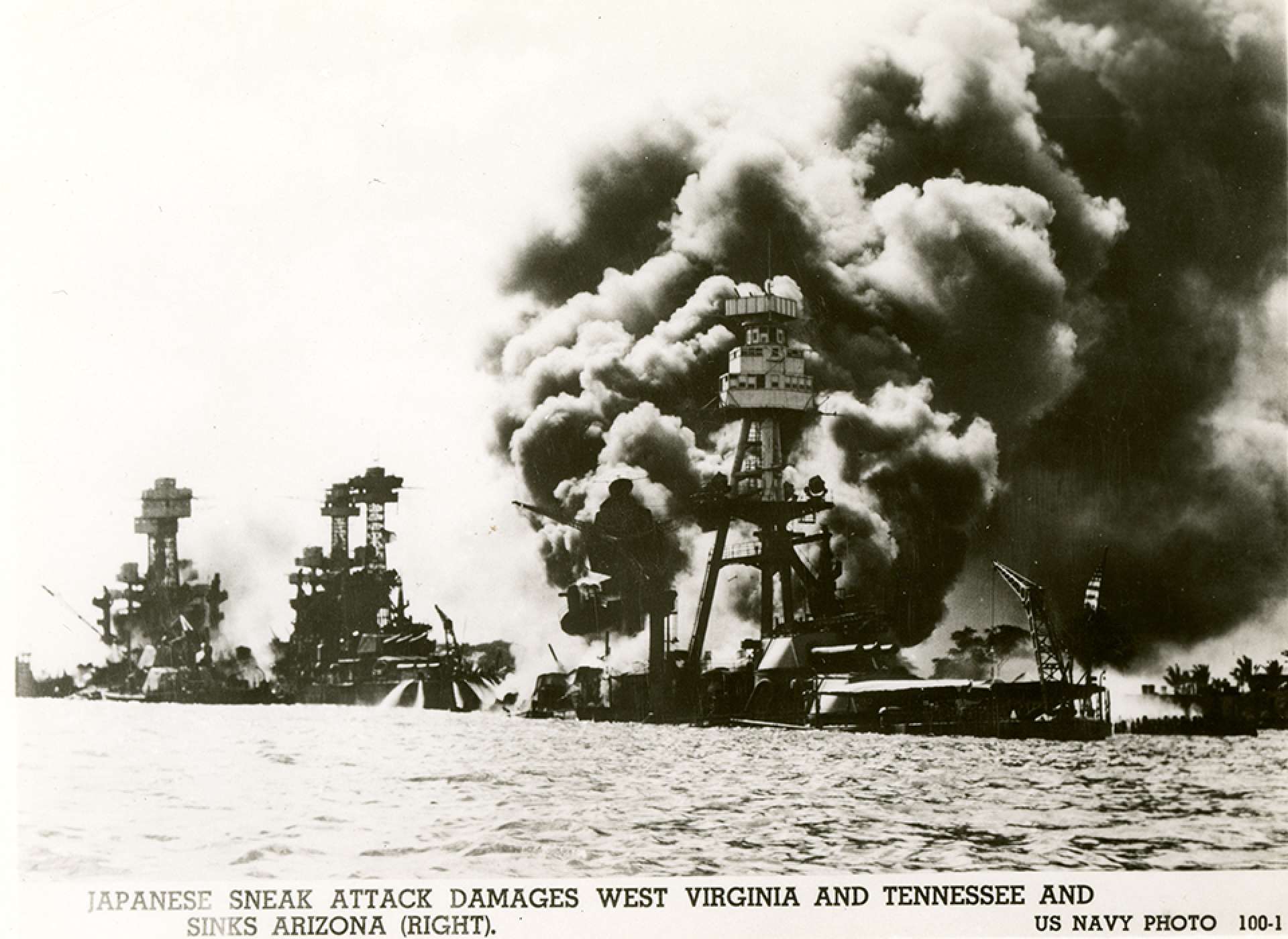
Attack on Pearl Harbor and the USS West Virginia, Tennessee, and Arizona in December 1941. The National WWII Museum, Gift of Julian Dean, 2010.523.022.
Working at The National WWII Museum, you are familiar with the event that launched The United States into World War II. However, having recently discovered a family member that was not only there, but also died due to the attack, personally gave me pause. Objects featured in the Museum’s permanent collection, such as the fragment from the USS Arizona in the Arsenal of Democracy Gallery , immediately makes me think of both photos I now have of my cousin.
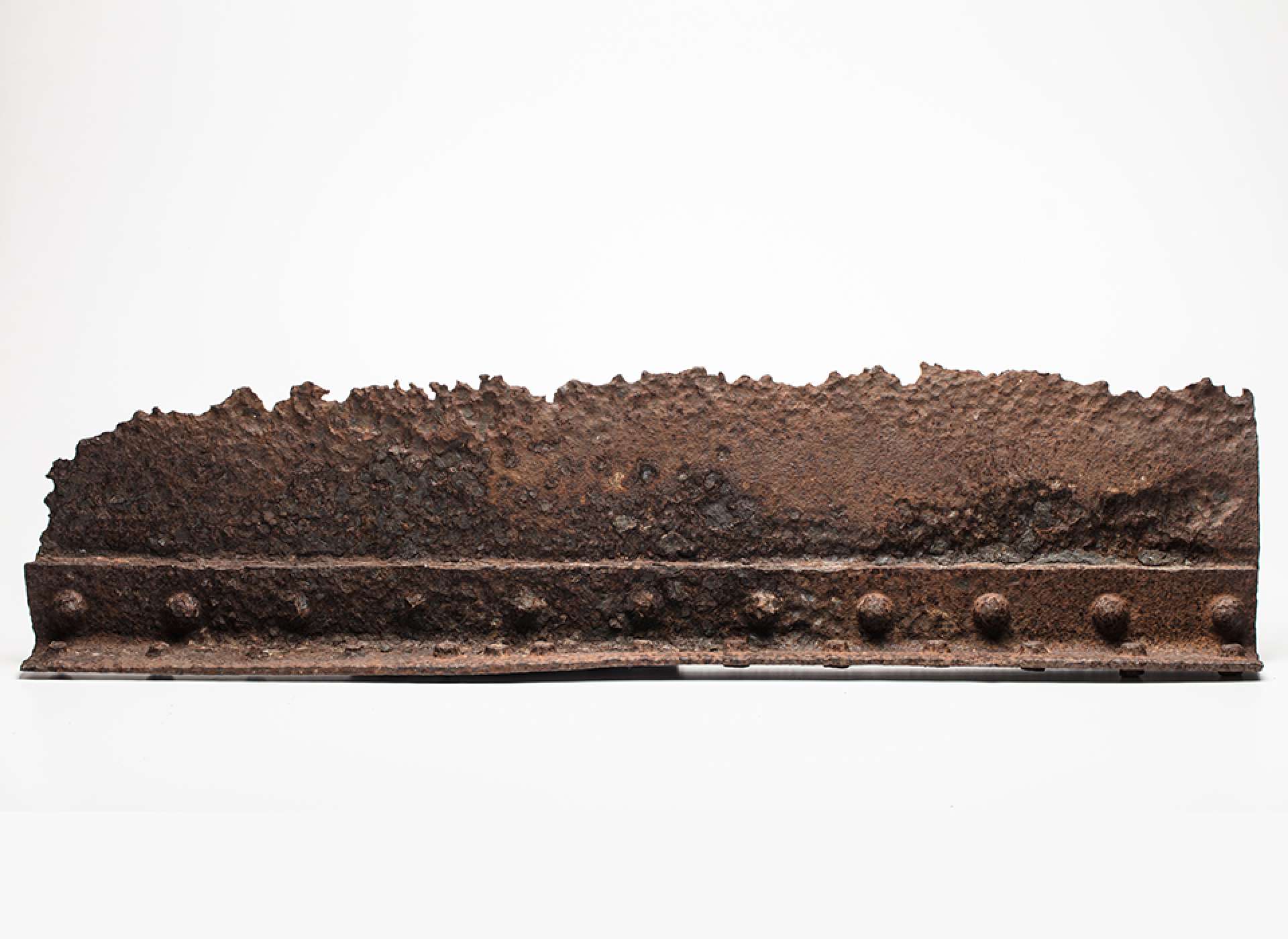
USS Arizona Fragment from the Collection of The National WWII Museum, Gift of the Department of the Navy, 2009.117.
They have become a personal touchstone in my own family’s story.
The next source that I consulted was a collection of newspapers from December 1941-February 1942. I primarily focused on newspapers in Indiana and Ohio, as the Stratton family was located almost 90 minutes from Cincinnati. One database that I used was Newspapers.com. Articles on the attack on Pearl Harbor, including images of the USS Arizona , were easy to find. It was also here that I found notices of John Raymond Stratton being listed as still missing in action on Christmas Eve, 1941. I’ve thought a lot about Frank and Amy Stratton, and how waiting for news of your son affected them at this time. The last article I found from The Indianapolis Star on May 5, 1942 lists him as one of 58 Hoosiers in the Navy who had given their life for their country when the United States went to war. It was here that I hit a wall in my research.
At this point, I turned to the experts that I work with at the Institute for the Study of War and Democracy at The National WWII Museum. Adam Givens, DPAA Research Partner Fellow, works directly with the DPAA. It was through their website that we were able to find the WWII POW/MIA List and find that John was listed as “non-recoverable,” meaning that he is still on the USS Arizona . The National WWII Museum also provides research resources on its website. As for individuals who may not have the time to dig through records to learn more about their WWII veteran, the Museum also provides the option to pay for our services in locating documentation of your WWII veteran’s service. Currently the National Archives are closed, which has put a hold to these services. However, once these offices open, the Museum will be able to process these requests.
Researching and exploring the service of your WWII veteran is a very humbling experience. Documenting the short life of my cousin, John Raymond Stratton, and diving into the articles and artifacts that chronicled the experiences of Pearl Harbor, as well as processing how this impacted our family, will be the driving force that keeps his memory alive for the generations to come.
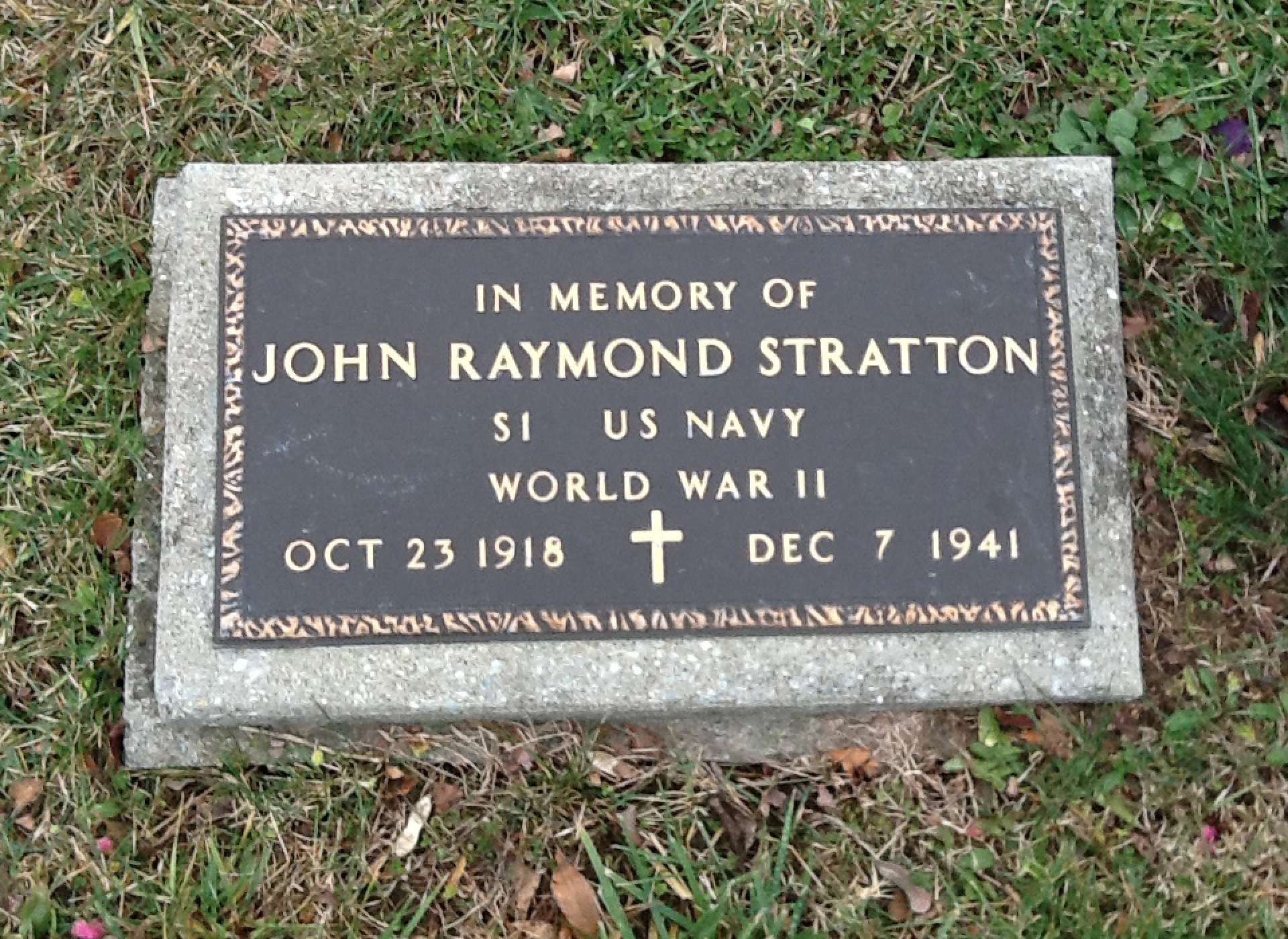
John Raymond Stratton’s tombstone, courtesy of the Edens family.

Abbie Edens
Abbie Edens is the former Director of Education at The National WWII Museum.
Explore Further

The Fallen Crew of the USS Arizona and Operation 85
The Operation 85 project aims to identify unknown servicemen who perished aboard the USS Arizona during the attack on Pearl Harbor.
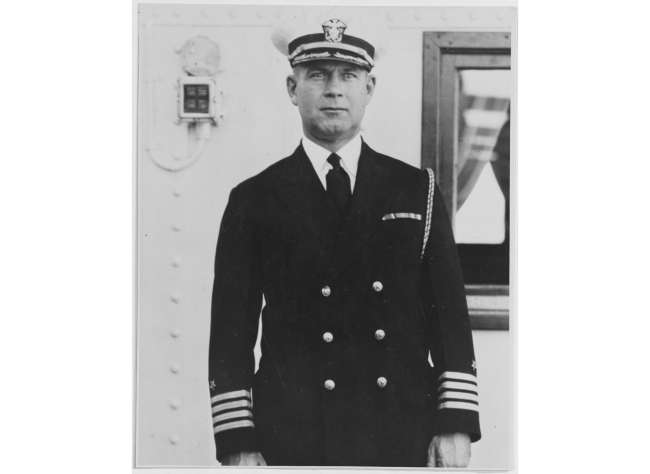
Valor at Pearl Harbor: Rear Admiral Isaac C. Kidd’s Medal of Honor
Bravery—even unto death—was evident everywhere as Imperial Japan’s air and sea forces struck the US naval base at Pearl Harbor on December 7, 1941.
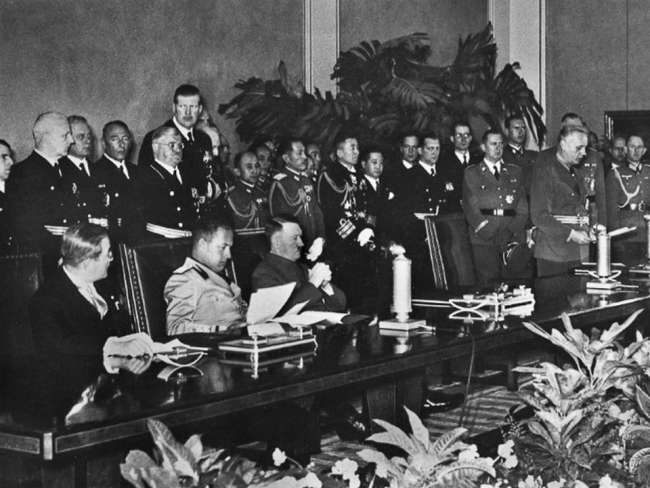
A Shared Enmity: Germany, Japan, and the Creation of the Tripartite Pact
Shared enmity toward Franklin D. Roosevelt’s United States of America is what brought Nazi Germany and Imperial Japan together again in the early fall of 1940 to certify a new agreement.
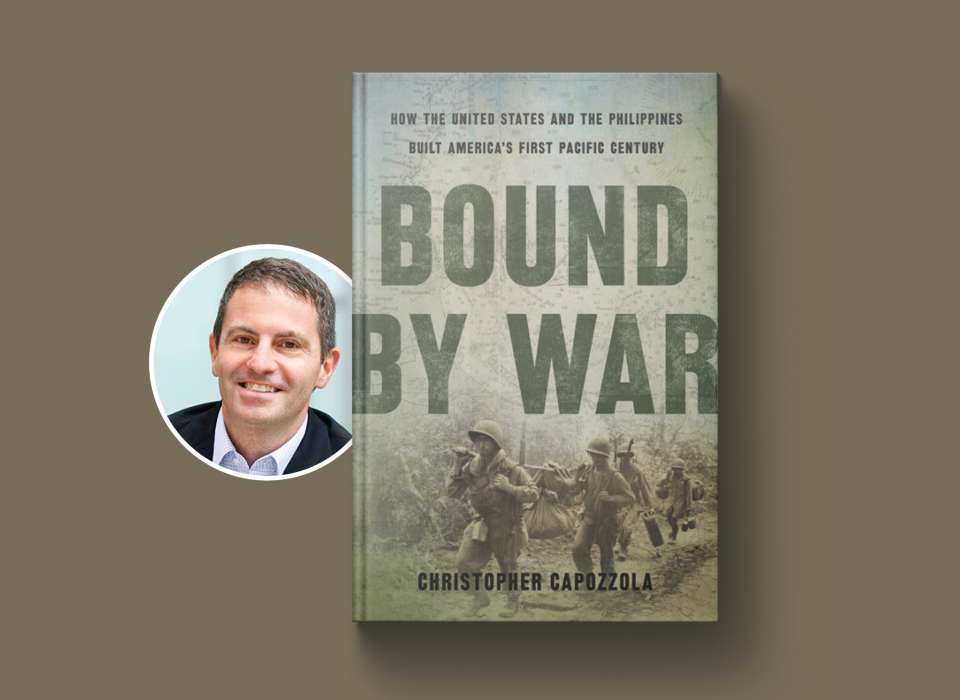
Meet the Author "Bound By War: How the United States and the Philippines Built America's First Pacific Century"
Join us for the concluding event of our 80th Anniversary of Pearl Harbor programming, a discussion that covers a sweeping history of America’s long and fateful military relationship with the Philippines amid a century of Pacific warfare.
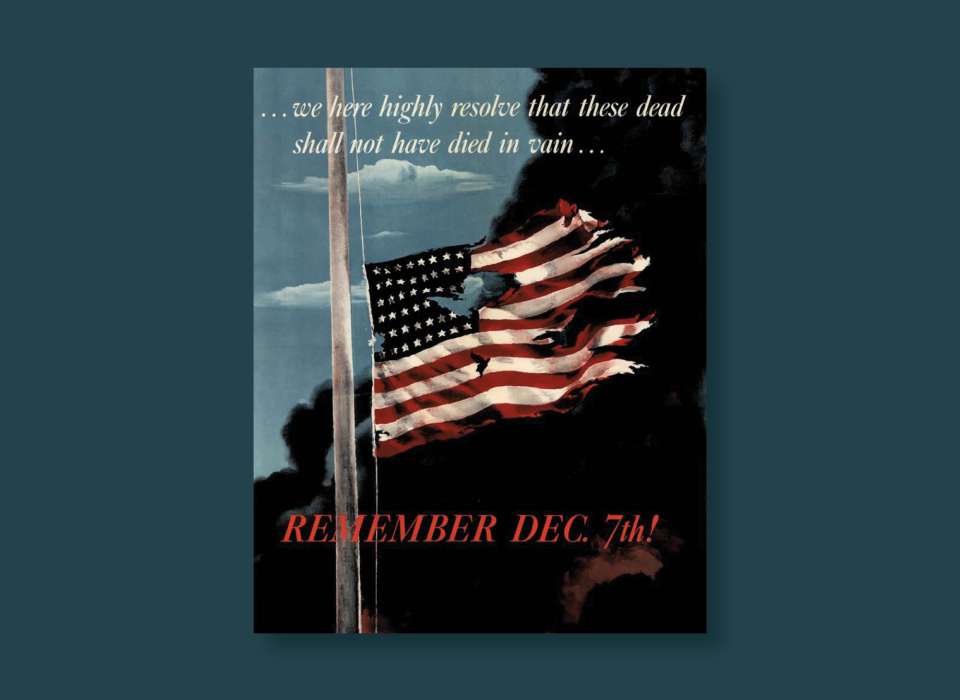
Pearl Harbor: The Aftermath
A panel discussion of historians from members of The Institute for the Study of War and Democracy in The National WWII Museum’s US Freedom Pavilion: The Boeing Center
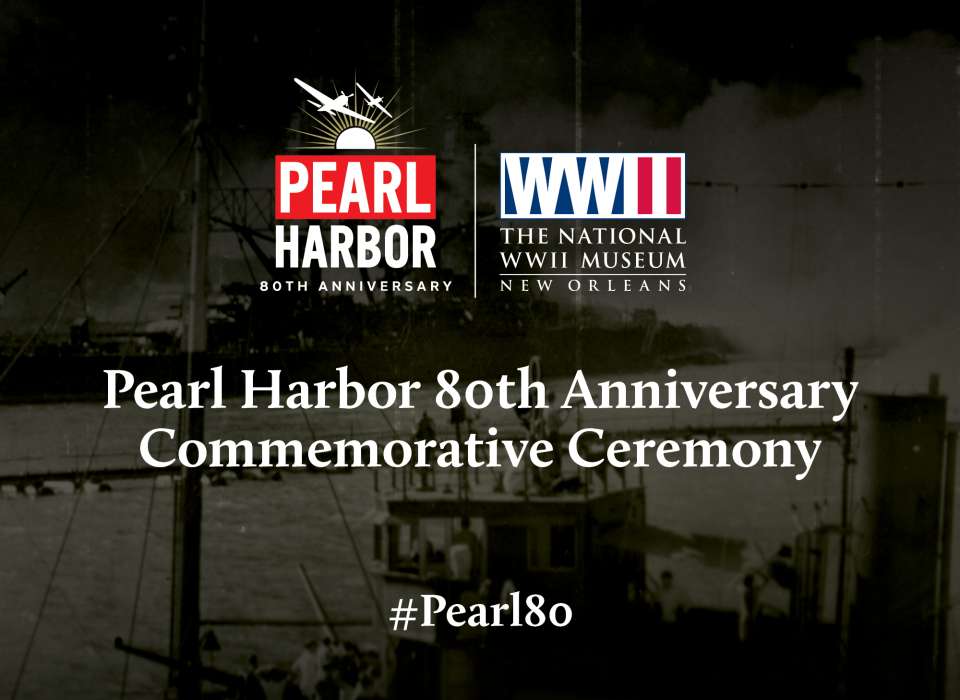
Pearl Harbor 80th Anniversary Commemorative Ceremony
Early on December 7, 1941, citizens and servicemembers alike in Pearl Harbor, Hawaii, faced terror as Japanese planes rained fire on the island in a stunning surprise attack. The assault quickly plunged the United States into a world-changing war. Each year, The National WWII Museum commemorates those who lost their lives on that fateful December day.
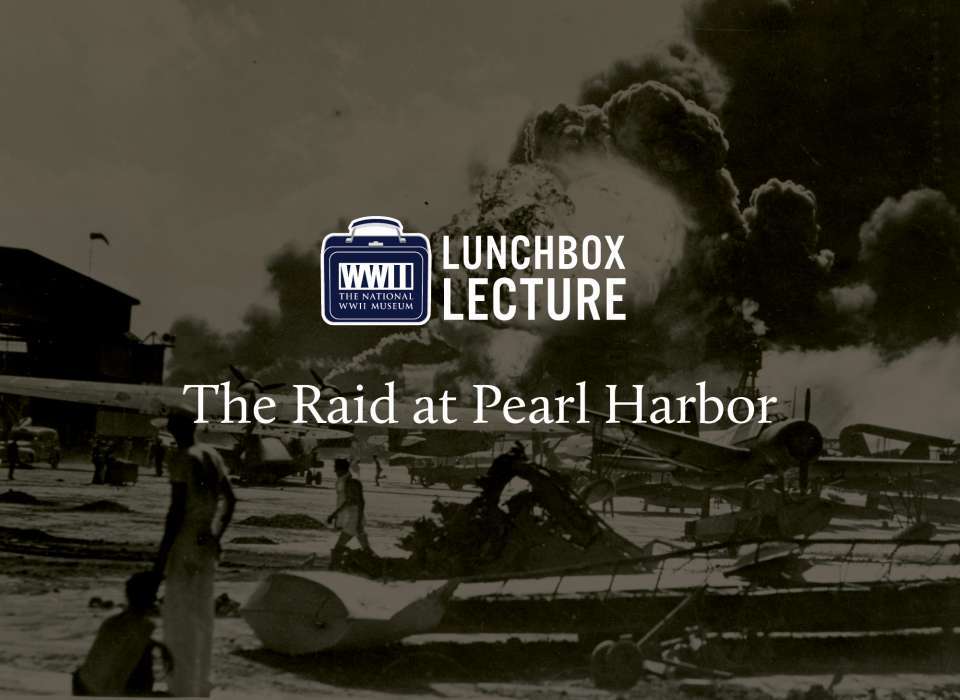
Lunchbox Lecture: The Raid at Pearl Harbor
While US strategy in 1941 was largely focused on the war in Europe, the bold carrier raid seized the initiative against increasing US pressure over Japan’s ongoing war in China. Captain Rick Jacobs will discuss the events of that terrible, heroic day—from the opening of Japan by Commodore Mathew Perry in the 1850’s through the devastation at Pearl Harbor on December 7.
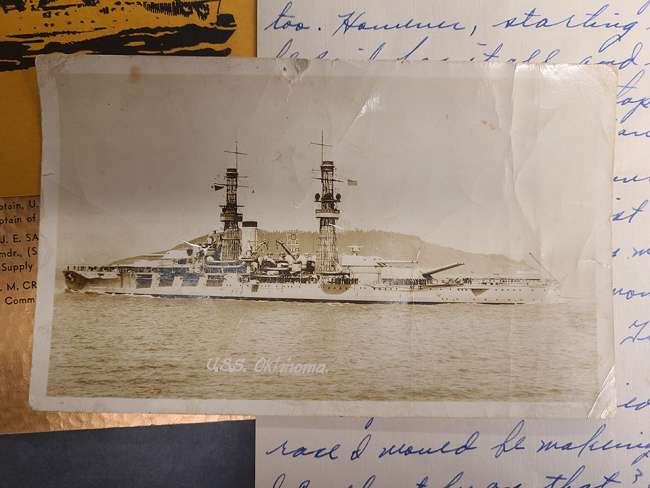
Recovered and Identified on the USS Oklahoma
AMM2c Durell Wade made the ultimate sacrifice manning his battlestation on USS Oklahoma during the attack on Pearl Harbor.

IMAGES
VIDEO
COMMENTS
"26 th Mission": War Bond Tour . The USAAF selected the Memphis Belle and its crew to represent the strategic bombing effort on a widely-publicized war bond and morale-boosting tour with more than thirty stops across the country. Acclaimed in newspapers and greeted as heroes by large crowds, the famed aircraft and crew became national ...
After the war bond tour, he volunteered for additional combat duty and flew B-29s against Japan. Morgan was promoted to major at a ceremony at Patterson Field (now Wright-Patterson AFB) in July 1943. Morgan's B-29, Dauntless Dotty. Morgan (left) flew with Maj Gen Emmett O'Donnell (center) on the first raid on Japan by B-29s based in the ...
In 1943, the Memphis Belle flew into Dayton during a war bond tour of 30 cities. The tour, a way to raise money and boost morale, was dubbed the "26th mission." ...
The war bonds actually were a loan to the government to help finance the war effort. ... Such popular Hollywood stars as Greer Garson, Bette Davis and Rita Hayworth completed seven tours in more than 300 cities and towns to promote war bonds. The "Stars Over America" bond blitz, in which 337 stars took part, surpassed its quota and netted ...
Subscribe: http://www.youtube.com/PublicDomainFo...Like: http://Facebook.com/PublicDomainFootageVisit: http://www.PublicDomainFootage.comFollow: http://Twit...
War bond. United Kingdom national war bond advertisement (1918) War bonds (sometimes referred to as victory bonds, particularly in propaganda) are debt securities issued by a government to finance military operations and other expenditure in times of war without raising taxes to an unpopular level. They are also a means to control inflation by ...
Filmed on September 26, 1943. Third War Bond tour comes to an end and its cavalcade of stars returns home. Band leader Kay Kyser, Fred Astaire, Lucille Ball, James Cagney, Judy Garland, Greer Garson, Betty Hutton, Harpo Marx, Dick Powell, and Mickey Rooney arrive at the Glendale railroad station. Kyser is positioned behind the microphone ...
After 25 missions, the crew and the Belle went on a War Bonds tour, stopping at Patterson Field in Ohio. Recalling the tour decades later, Commander Robert Morgan wrote: "In today's lingo, our ...
Following the War Bonds tour, Memphis Belle was saved from the scrapyard axe by the Mayor of Memphis Tennessee. She was ultimately placed into storage until 1949, when she was moved to be placed ...
B-17E Suzy-Q. The Suzy-Q, a 19th BG B-17E, was the first USAAF heavy bomber to complete 25 missions and return to the US. It flew combat missions early in the war in the Pacific from February-October 1942, when it returned to the US for a war bond tour. Suzy-Q nose art—the circled areas highlight combat damage repair. B-24D Hot Stuff.
The Memphis Belle was flown back to the United States on 8 June 1943 by a composite crew chosen by the Eighth Air Force, airmen who had flown combat aboard; they were led by Capt. Morgan for a 31-city war bond tour. Morgan's original co-pilot was Capt. James A. Verinis, who himself piloted the Memphis Belle for one mission. Verinis was promoted ...
The Great 1943 War Bond Tour. ... War Bonds were issued by the U.S. Government, at first being called Defense Bonds. The name was changed to War Bonds after the Japanese attack on Pearl Harbor, December 7th, 1941. Known as debt securities for the purpose of financing military operations during war time, the bonds yielded a mere 2.9 percent ...
According to decades of World War II aviation history, the crew of the "Memphis Belle" became the first B-17F Flying Fortress crew to complete 25 missions following a strike against Kiel, Germany. She and her crew were promptly sent home to the United States to join where they were scheduled to go on a War Bonds Tour.
In June 1942, she embarked on a 10-week war bond tour throughout the western United States with Gable. During the tour, she began promising kisses to the highest war bond buyers; while selling bonds at the Pioneer Courthouse in Portland, Oregon, she sold a $5,000 bond to a man for two kisses, and another to an elderly man for $50,000.
In April 1943, one month after their appearance in the Saturday Evening Post, Rockwell's original paintings began a sixteen-city Four Freedoms War Bond Show tour to publicize the Second War Loan Drive. The U.S. Treasury Department, realizing their potential to generate revenue through the sale of war bonds and to boost public morale, partnered with the Post to sponsor the tour.
The public outcry led to Miller becoming the first African American serviceman sent on a WWII war bonds tour. In 1942, he became one of the first African Americans to be featured on a Navy recruiting poster. That same year his story was dramatized on the CBS radio series, "They Live Forever."
Lombard embarked on a multicity tour to sell war bonds during the second week of January 1942. The Victory Committee was now working directly with the Treasury Department and Internal Revenue Service.
The exhibit focuses on the comic duo's war bond drive in 1942, a tour that museum officials say included stops in 80 cities in 22 states, raising $85 million for America's military during ...
The "mini submarine", or HA-19, that was captured on December 8 th was sent around the United States on war bond rallies between 1942 and 1945. Admission to view the submarine was made possible through the purchase of war bonds and stamps. One stop on its tour was Washington D.C. on April 3, 1943.
The Pacific's true story of John Basilone's service career includes his tenure selling war bonds in the States. The series' depiction of Basilone's brief romantic entanglement with Virginia Grey is likewise based in fact. Grey's contributions to the war effort saw her join the war bond tour and act as a frequent volunteer hostess at the star-studded Hollywood canteen, where military ...
After repairs, the 78-foot long sub was shuttled around the United States as part of a war bond tour, attracting crowds who couldn't help but come out to see the enemy's war machine and perhaps even donate some money to America's fight with the Axis. After 1947, the sub was displayed outside the Naval Station in Key West, Florida.
Nebraska Governor Dwight Griswold (left) presented comedians Bud Abbot and Lou Costello with souvenir ears of corn during ceremonies at the Nebraska State Capitol on July 31, 1942. RG2183-1942-731-4. July 31, 1942, marked the final day of Lancaster County's month-long campaign for war bond sales. Conducted as a part of the World War II ...
Here it was listed that John Raymond Stratton was on the USS Arizona. Attack on Pearl Harbor and the USS West Virginia, Tennessee, and Arizona in December 1941. The National WWII Museum, Gift of Julian Dean, 2010.523.022. Working at The National WWII Museum, you are familiar with the event that launched The United States into World War II.